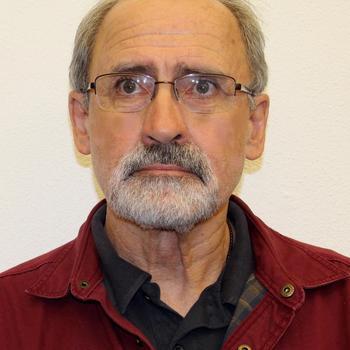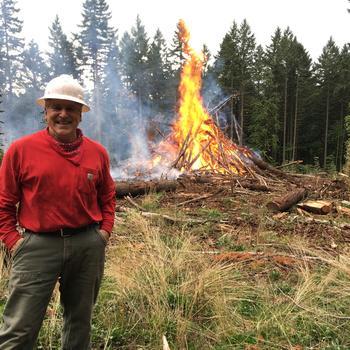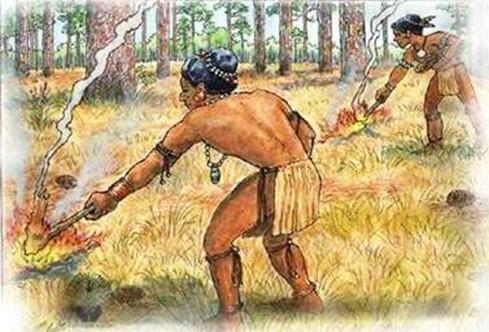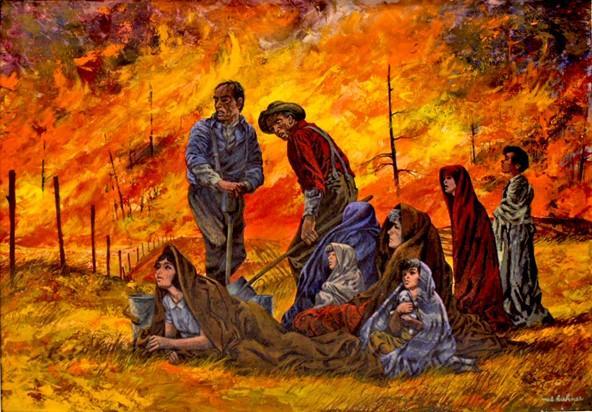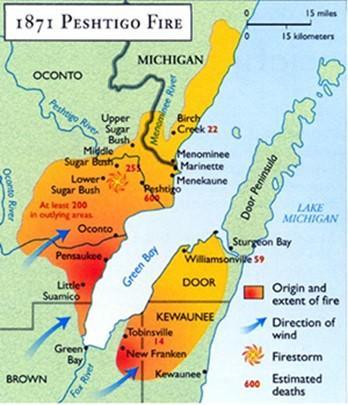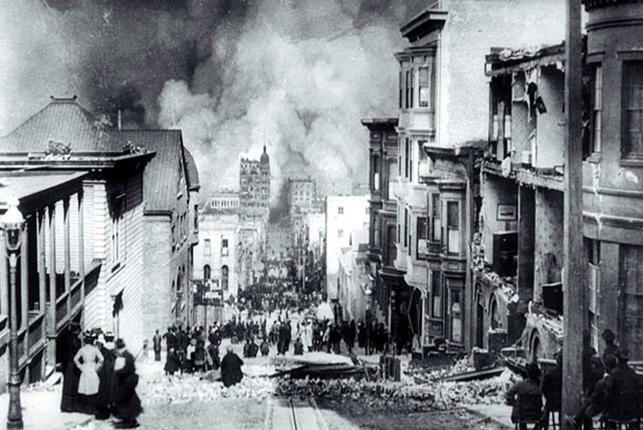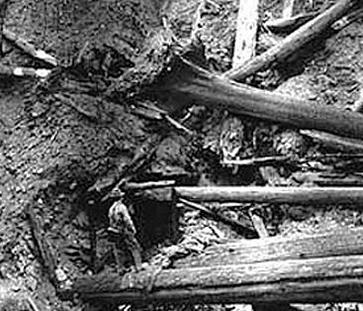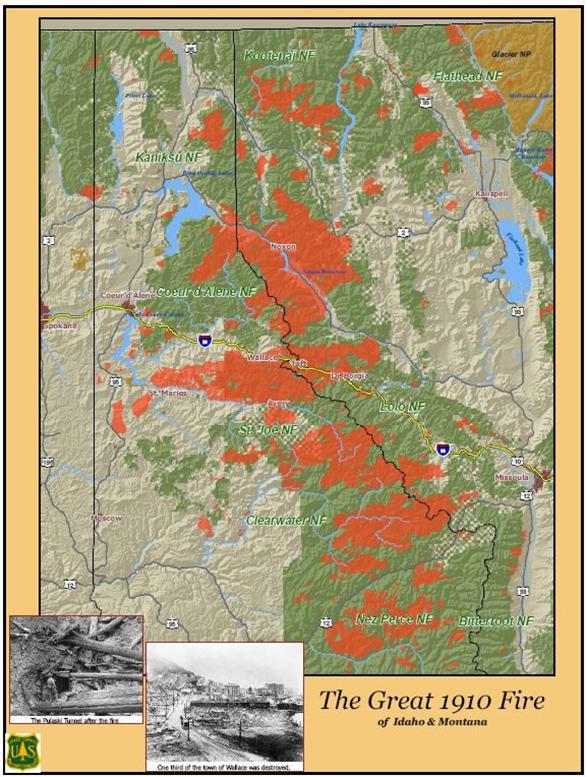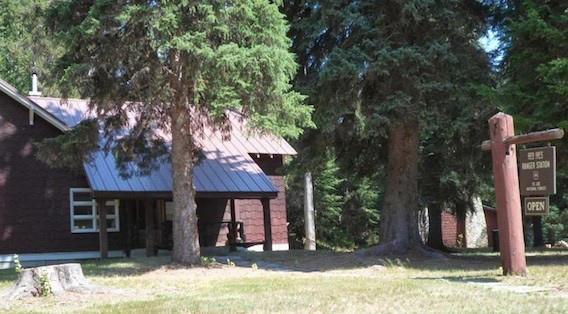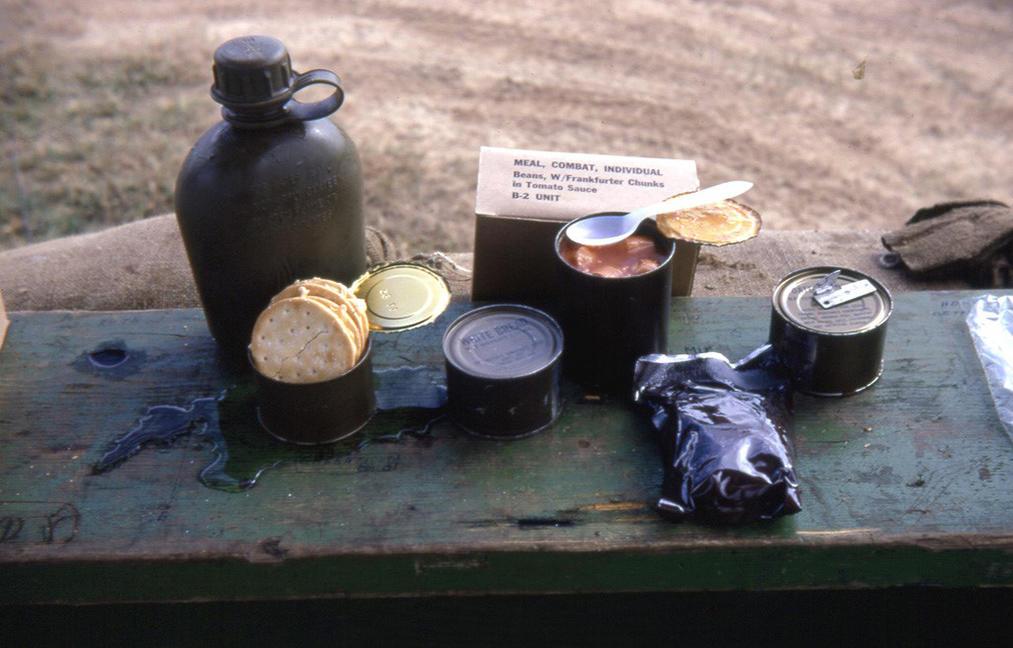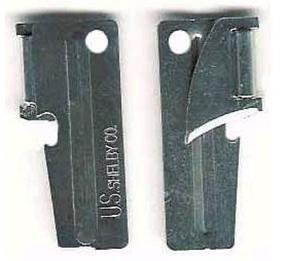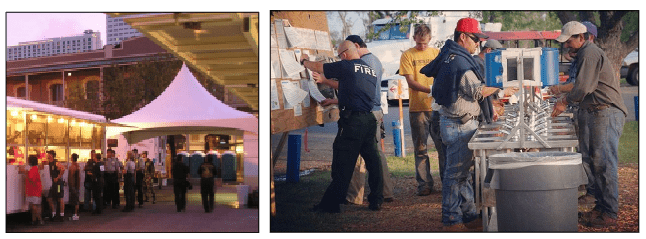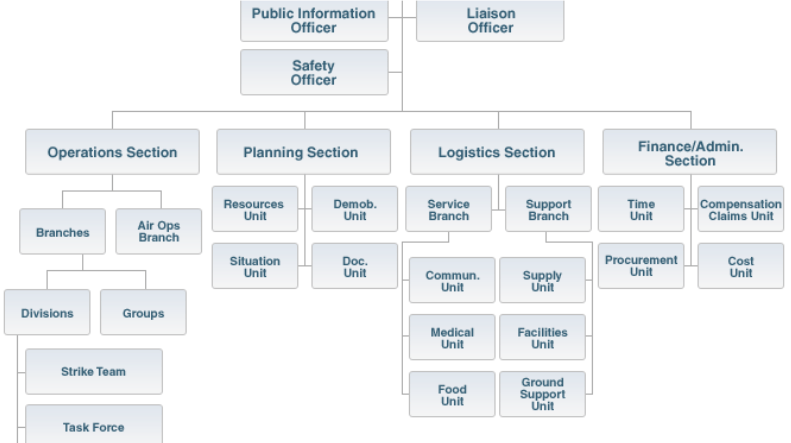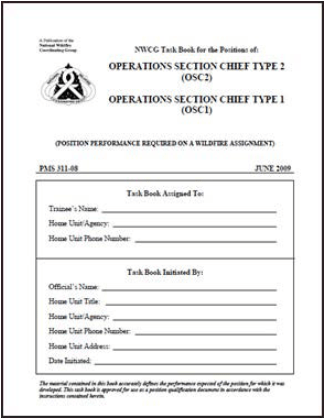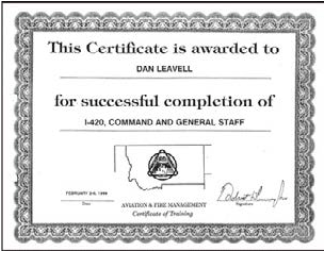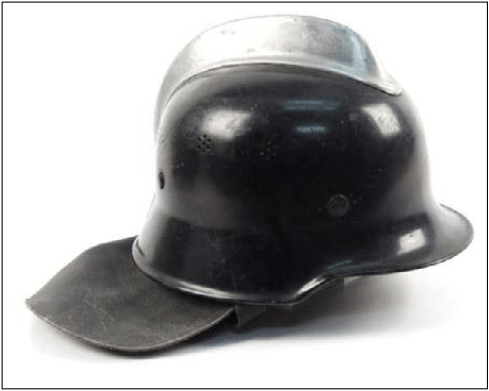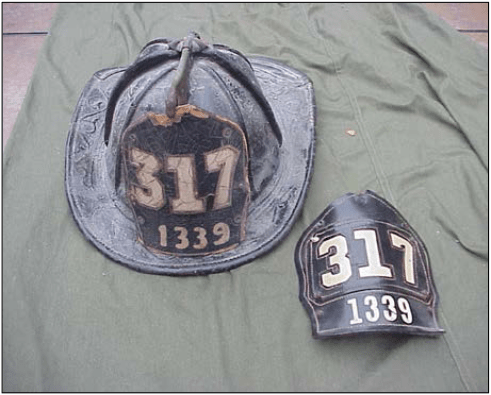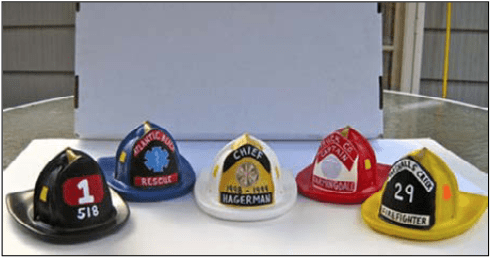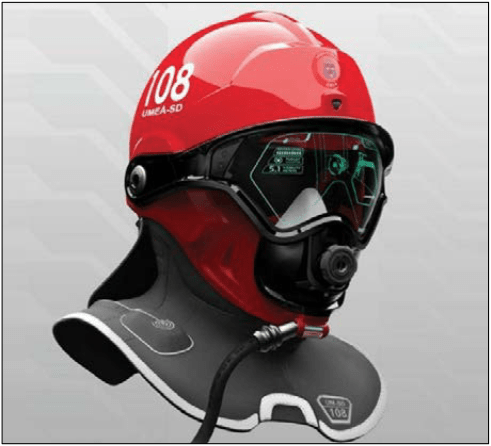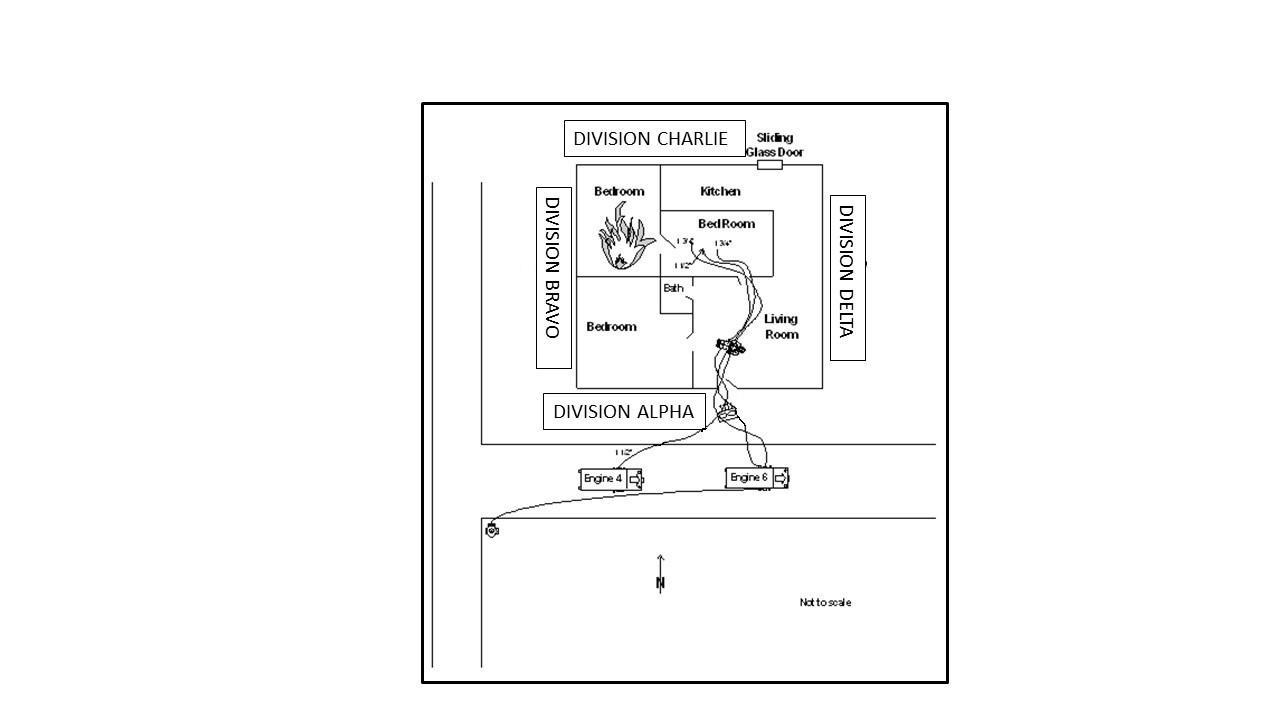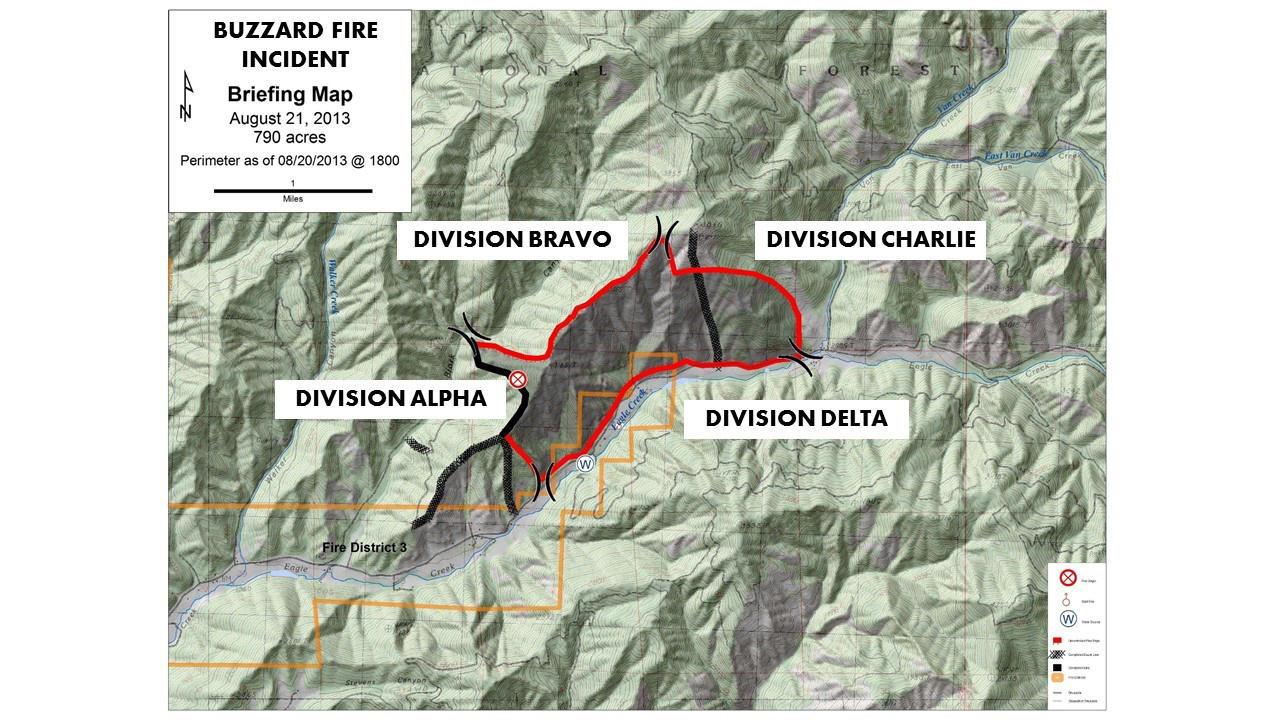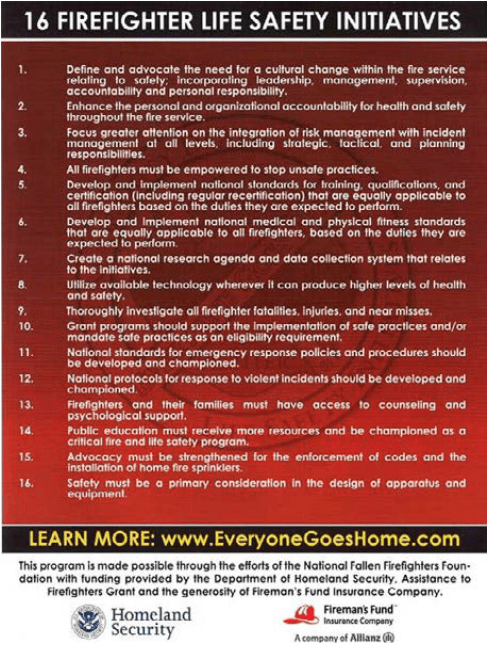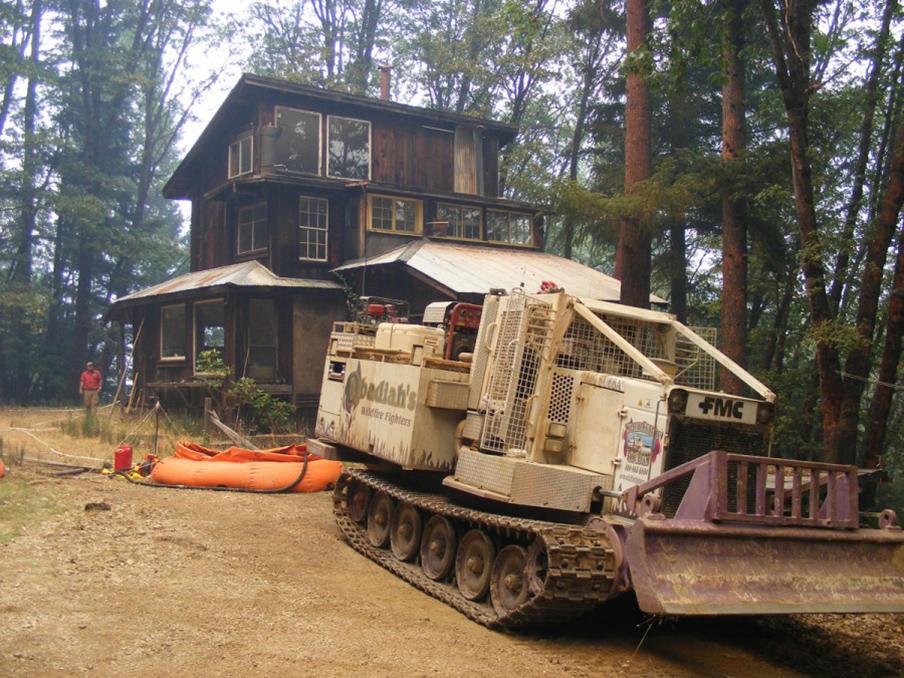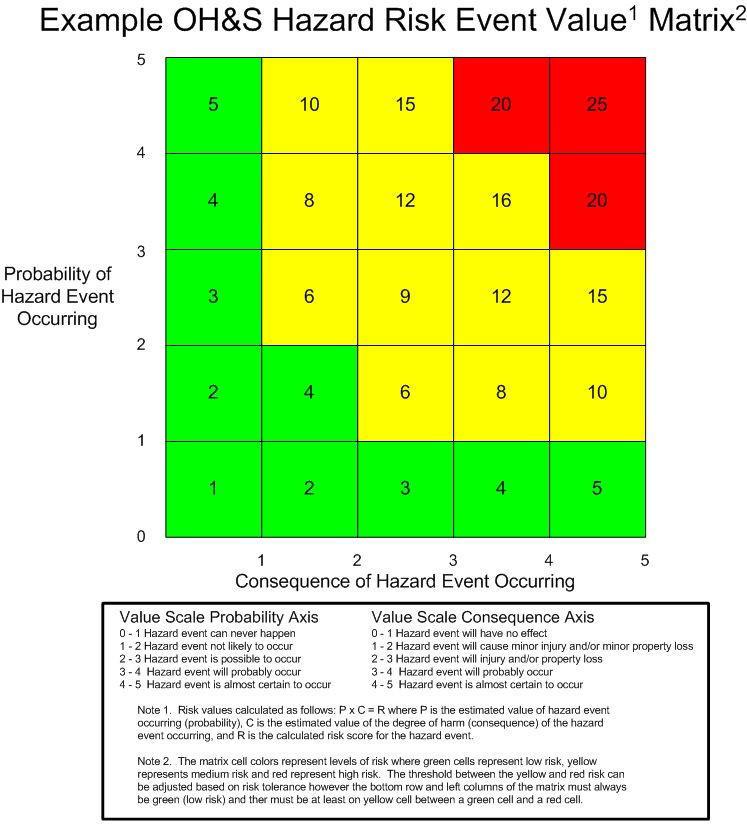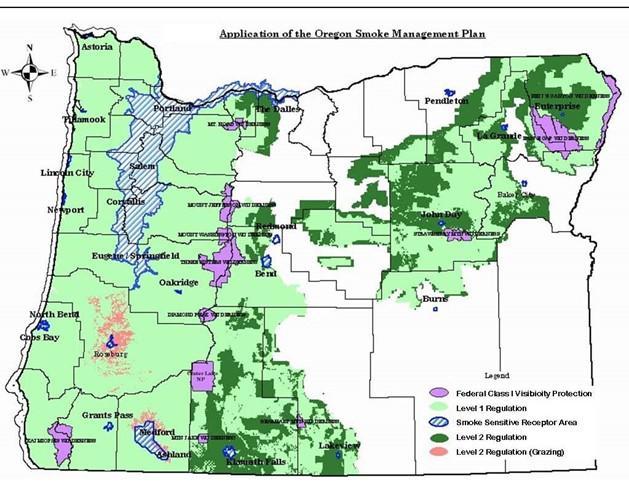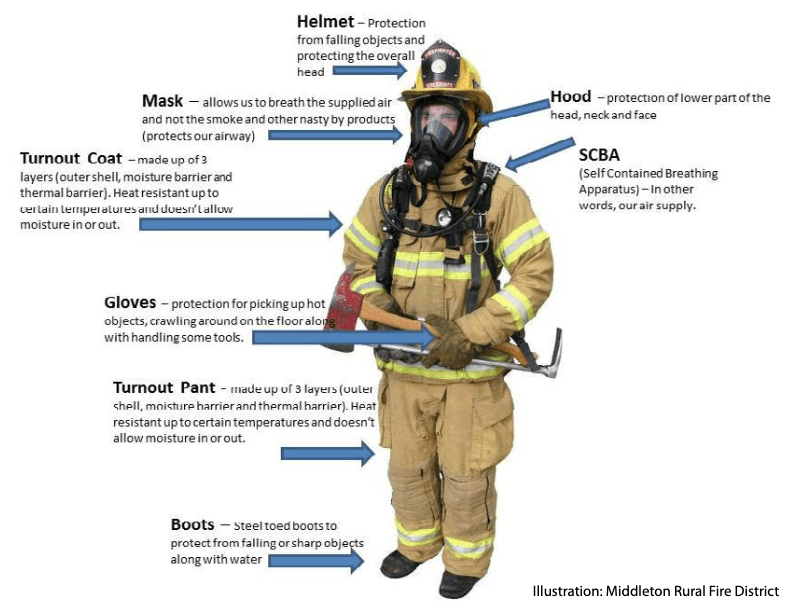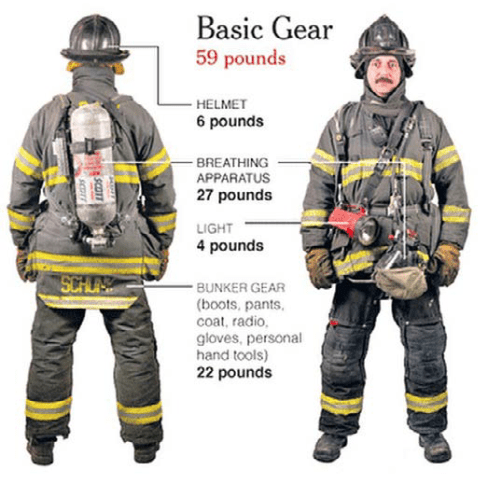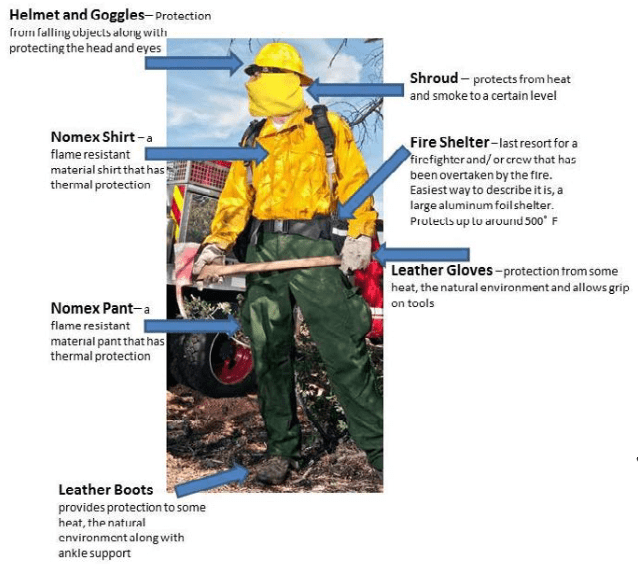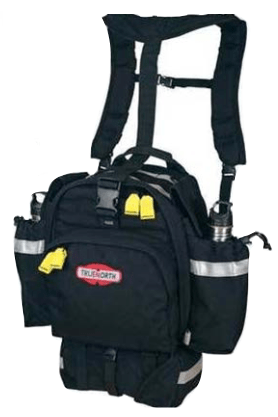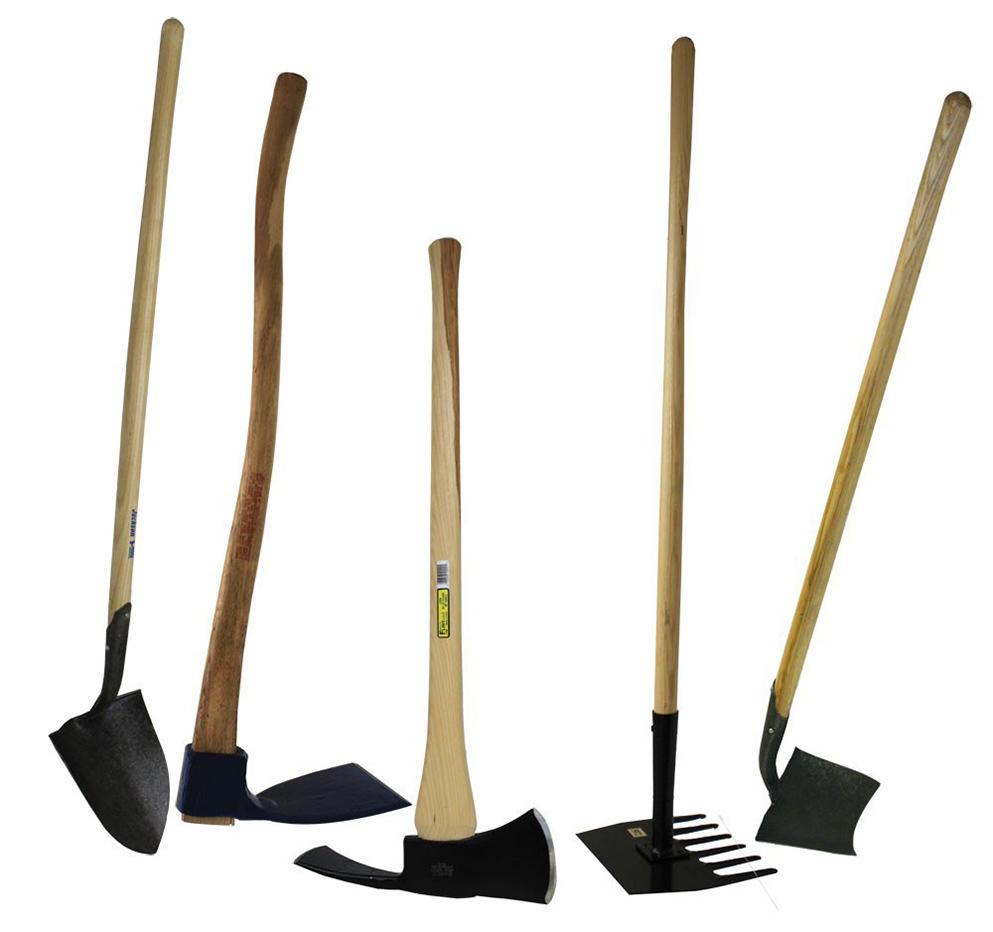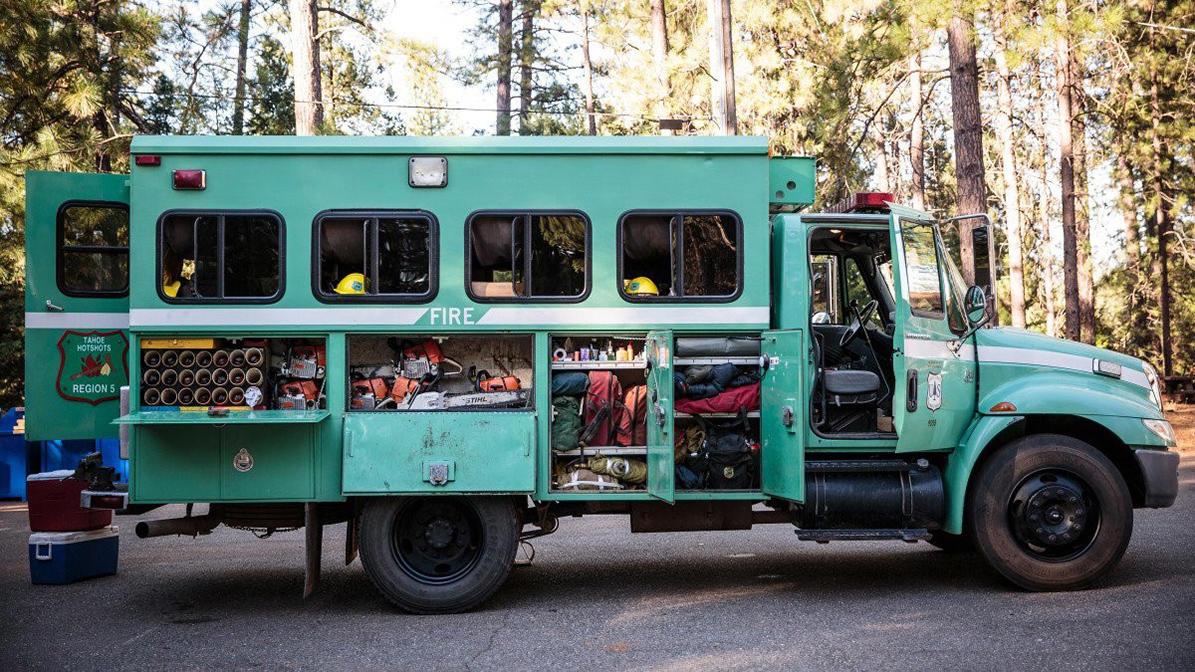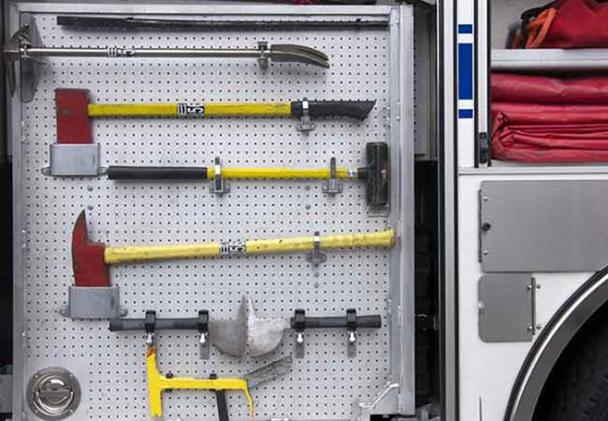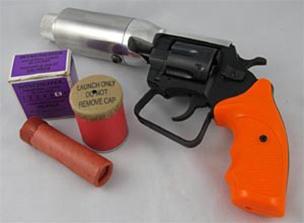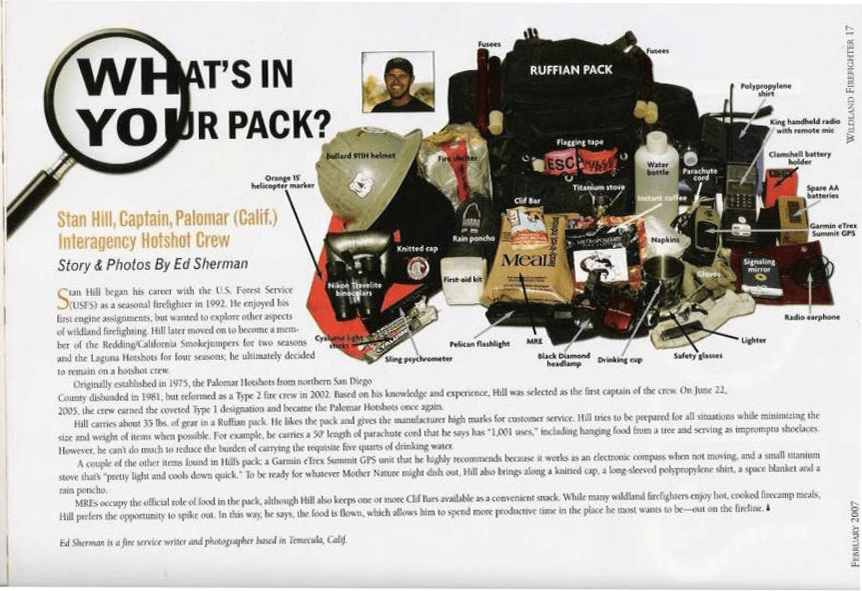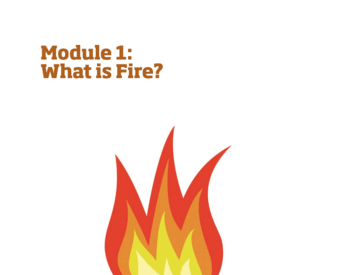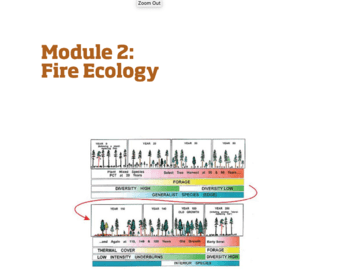Proposed Agenda
- 8:00-8:30 - Welcome
- 8:30-9:00 - Introduction and Objectives
- 9:00-9:30 - Activity I and discussion
- 9:30-10:00 - Break
- 10:00-10:30 - History and Policies
- 10:30-11:00 - Standards and Orders
- 11:00-11:30 - 1910 revisited
- 11:30-12:00 - How Things Change
- 12:00-12:30 - Lunch
- 12:30-1:30 - Incident Command System
- 1:30-2:00 - Wildland Fires
- 2:00-2:30 - Structural Fires
- 2:30-3:30 - Risk and Safety
- 3:30-4:00 - Lessons Learned
- 4:00-4:30 - Egos, Personalities, and Politics
- 4:30-5:00 - Wrap-up
- 5:00-5:30 - Discuss plans for the fire field trip
Overview
This module focuses on the history and social contexts of fire management, how those contexts influence policies, how fire management evolved over time, and basic fire management objectives.
Learning Objectives
- Understand the history of wildland fire fighting in a cultural, political, and social context
- Identify and define different approaches to suppressing and controlling fire
- Understand the management objectives for fire suppression (wildland and structure)
- Compare and contrast the uses of fire control vs. fire use vs. fire managed for natural resource benefit
- Try on a set of gear for wildland and structure firefighters (under supervision)
Learning Outcomes
- Incorporate and compare a risk assessment process into your life with an understanding of fire risk concepts
- Organize a family event using an ICS organizational structure
Content Outline
- Introduction
- History and Policies
- The Incident Command System
- The NWCG
- More tragedies mean more adaptation
- Standardization
- Wildland and Structural Fires
- Wildland fires
- Structure fires
- Risk
- Put it out
- Fire prevention
- Fire control
- Fire exclusion
- Fire suppression
- Fire containment
- Management Objectives for Suppression
- Life and safety (tools used)
- Incident stabilization
- Property and resources
- Prescribed Fire
- Lessons Learned
- Work/Rest
- Guidelines
- Regulations
- Smoke, air quality, and health
- Egos, Personalities, and Politics
Introduction
No one knows when the first human “managed” fire. Some suggest the earliest form of fire management took place in South Africa over 5 million years ago—when that first human saw a lightning strike and swallowed fear to take away a firebrand to start another fire. Managing fire with tools such as wooden drills or flint stones dates to the Neolithic Age, about 7000 B.C.E. Prior to European settlement, Native American tribes throughout Oregon, the Pacific Northwest, and the Americas used wildland fire to manage ecosystems primarily to increase the availability of food plants such as camas (Camassia spp.) and huckleberry (Vaccinium spp.), and game species such as deer (Odocoileus spp.)(Figure 1). As pandemic disease took a toll on populations and settlements displaced native habitation, the use of “managed” fire by Native Americans had ceased by the early 1900s.
History and Policies
Fire management has evolved over time. In 1608, settlers in Jamestown, Virginia had the first recorded major fire in the New World. It burned down many structures in the settlement and destroyed provisions. Many settlers died that winter from lack of food and exposure to the severe winter. In 1653, Boston, Massachusetts purchased its first fire engine, and in 1678 formed the first paid fire company. Philadelphia and New York also formed fire companies in the 1700s (Figure 2). Following that, the U.S. began organizing fire management. The basic tools were leather buckets, hooks, and small ladders, and in some areas horse-drawn water wagons were employed.
Structure and wildland fire management shifted in the late 1800s and early 1900s after many catastrophic forest and structure fires hit the United States. On October 8, 1871, the Peshtigo fire started to burn in Wisconsin (Figures 3 and 4). Fueled by 110 mph winds, the fire ultimately consumed 1.28 million acres of forested land, 12 communities, and killed between 1,200 and 2,500 people. The Great Chicago Fire started that same evening, destroying up to 3.3 square miles (1/3 of the city), leaving 100,000 residents homeless, and up to 300 people dead. Oregon experienced large fires from 1849-1945 (see Table 1).’
| Fire name | Year | Acres burned | Notes |
|---|---|---|---|
| Yaquina Fire | 1849 (also listed as 1853) | 480,000 | Started near Corvallis and swept across the Coast Range to Yaquina Bay on the Pacific Ocean at Newport. |
| Silverton Fire | 1865 | 990,000 | The largest fire in recorded history in Oregon, it started southeast of Salem and burned nearly 1,547 square miles—more than three times the size of Multnomah County. |
| Coos Bay Fire | 1868 | 300,000 | What is now the Elliott State Forest in Coos County |
| Columbia Fire | 1902 | 170,000 | Also known as the Yacolt burn. Near Mount Hood |
| Tillamook Fire | 1933 | 240,000 | Washington, Yahmill, Tillamook counties |
| Bandon Fire | 1936 | 287,000 | The city of Bandon and its surroundings, killing 13 people |
| 2nd Tillamook Fire | 1939 | 217,000 | Near the Wilson and Salmonberry rivers |
| 3rd Tillamook Fire | 1945 | 173,000 | Covering portions of the two earlier burns |
Source: "Oregon's Largest Wildfires," The Oregonian, 2017.
In 1906, the San Francisco Earthquake and resulting fires caused almost three times the economic loss of the Great Chicago Fire (Figure 5). Fires caused more damage than the earthquake, burning for three days and destroying a quarter of the city (28,000 buildings and about 500 city blocks). More than 3,000 died and 250,000 were left homeless.
Getting “wet stuff on the red stuff” was proving a big problem with hand- and horse-drawn equipment. Many sought a better way to deliver water to fires. James Bichens Francis is credited with designing the first perforated pipe water delivery system, a precursor to today’s sprinkler systems. He installed the first system in 1852 in Massachusetts. Throughout the mid- to late-1800s, sprinkler systems were tested and installed with varying levels of success. In the latter part of the 1800s, the National Fire Protection Association (NFPA) and sprinkler system innovators teamed up to improve fire management.
- Activity I1 – Personal Reflections
- Appendix A
1 See Activities section for details on all activities in this curriculum
Early catastrophic fires shifted perception of the dangers of large fires and directed fire management for the next 100 years. Citizens and legislators demanded better fire protection and suppression.
The NFPA formed in 1896 as a direct response to the public pressure. NFPA developed codes and standards for fire and safety. In 1897, NFPA adopted a standard regulating the installation of fire-protection sprinkler systems in structures as the general policy became to establish standards to suppress, exclude, and control fire. NFPA is the current building code and fire department standard and is going strong to this day. According to its website, the organization publishes more than 300 codes and standards intended to eliminate death, injury, property, and economic loss due to fire, electrical, and related hazards. NFPA codes and standards are administered by more than 250 technical committees employing nearly 9,000 volunteer committee members, and the organization’s standards are used throughout the world.
- Activity II
- Videos
NFPA also produces training and equipment standards, offers public education, and conducts and supports research.
Many fires from the mid-1800s to the early 1900s were caused by mining construction, forest clearing, railroads with fire-prone equipment, and farmers clearing land. Brian Fagan, author of the book The Little Ice Age (2000 by Basic Books, New York, NY), concluded that a sustained warming and a “high incidence of westerly winds and mild winters” began between 1890 and 1900 and “continues, with one short interruption, to this day.” This resulted in increased “red flag” conditions of increased temperatures, lowering humidity, and high winds that may have contributed to the catastrophic fire conditions of that time.
Regardless of the reason, the structure fire service adapts to fit the needs—and responds most to calamities and tragedies.
Federal forest management started wildland fire service in 1876 when Congress created the office of special agent in the U.S. Department of Agriculture to assess the quality and conditions of forests in the United States. In 1881, the department expanded the office into the Division of Forestry. A decade later Congress passed the Forest Reserve Act of 1891 authorizing the president to designate public lands in the West into what were then called “forest reserves.” Responsibility for these reserves fell under the Department of the Interior until 1905, when President Theodore Roosevelt transferred their care to the Department of Agriculture’s new U.S. Forest Service. Gifford Pinchot led this new agency as its first chief, charged with caring for the newly renamed national forests.
The great Chicago and San Francisco fires destroyed cities, infrastructure, and people. The structure fire service and the building industry adapted and adjusted to prevent that from happening again. The Peshtigo fire is the deadliest fire in American history, leaving 1,200 to 2,500 people dead. It consumed the town of Peshtigo, Wisconsin and many other villages.
It also burned over approximately 1.5 million acres of forest. This was a reason used to create a forest service to provide a stewardship role in caring for the nation’s forests. Forest fires as well as the need to manage the nation’s national forests played a role in creating the U.S. Forest Service (USFS). From the beginning, the Forest Service took no chances and adopted a policy of total fire suppression, even though early foresters recognized the need for “light burning” to manage understory vegetation. This was problematic in that the national forests in the West were large, remote tracts of land and personnel and fire equipment consisted of a ranger with a horse and pack mule—or a fire backpack. Fire lookouts installed to assist the rangers in detecting and traveling to wildfires were no more than a platform precariously affixed to the top of a tall tree on a ridge.
Five years after the initiation of the USFS, the fledgling agency faced a test. The Big Burn of 1910 flared up with hurricane-force winds on a hot, dry August and spread through northeast Washington, northern Idaho, and western Montana (Figure 7). It spawned 1,736 fires, consumed 3 million acres, and killed 85 people in just two days. Entire towns and drainages were burned and blackened. The north Idaho town of Wallace lost the entire east end of the town.
Wallace eventually rebuilt and is now an historic town nestled under an interstate overpass. Travel from St. Maries, Idaho and on past Avery along the mountainous terrain on the upper reaches of the St. Joe River: one can still see the tops of 1910-burned western redcedar (Thuja plicata) snags poking up through the thick forests that regenerated following the fire. Anyone traveling in that area today can imagine the pain and sacrifice, flames and heat everyone endured that summer of 1910.
There are many stories of heroism, cowardice, panic, fear, and cool leadership during those 1910 fires. The tiny whistle-stop of Avery became the logistics center for the fires in the upper St. Joe. Army troops, homeless travelers, former vagrants, federal agents, and evacuated folks from all over the forest and mountains converged on the town.
They were loosely organized and sent into the Bitterroots to stop the fires or were evacuated. Avery was the last outpost at that time, with trails that led up into the upper reaches of the St. Joe River where the fires burned. The Civilian Conservation Corps built a group of buildings 37 miles upriver from Avery in the 1930s to plant trees, build roads, and repair watersheds still damaged by the fires of 1910. They also had to fight the new fires of the 1930s that included reburns of 1910. The Red Ives Ranger District used that same group of buildings for the District compound up until 1984, augmented by trailers for the employees and crews.
Fire crews mustered there in the ’70s and were sent out over areas first burned in 1910 and the 1930s and reignited as dry weather and summer thunderstorms struck the area. Crews in the ’70s did not face the same conditions as the crews in 1910, but fires did burn with varying levels of severity and kept things lively all summer long.
What happened during that summer of 1910 influenced an agency, a nation, and Congress to change wildland fire management. Improving fire management became the main objective. Visions of burned-over canyons and hillsides, bodies wrapped in canvas, and towns in ashes drove Forest Service chief William Greeley to keep that summer from happening again.
The Weeks Act signed in 1911 allowed more cooperation between federal and state governments for fire control. Soon after, many fire protection associations organized to ensure proper budgets, equipment, and personnel were available to fight fires, especially on commercial timberland. Some of the first fire protection associations in the country appeared in southern Oregon. The Klamath Fire Protection Association started in 1908, and the Walker Range Forest Protective Association (Walker Range Fire Patrol Association) originated in 1927. Both are still in existence.
Still buffeted by the catastrophic 1910 fires and severe fires in the ’30s, the wildland fire service responded for many decades by increasing budgets and resources to fight fires above all else. The quality of resources also changed after 1910. Conscripting men from the skid rows did not work well and the Forest Service made the first attempt to get better-quality firefighters by the admonition given in 1916 (Table 2). In 1935, the Forest Service created the “10:00 a.m.” rule: all wildland fires were completely out by 10:00 a.m. the next morning after initially reported. All fires—all puffs of smoke and all embers—were extinguished by early morning the next day. This was modified in the late ’70s and ’80s to allow some flexibility in contain-and-control strategies.
Table 2. Firefighter classifications, 1916:
- Class A: Men worthy of complete confidence; exerting a well-recognized anti-fire influence, possessing superior physical ability and power of endurance. Men who on a control line “work on their nerve,” or who will do so if given proper inducement. Men who have the experience and personality to succeed as Crew Bosses (not merely Crew Leaders.)
- Class B: Trustworthy men equal to those of Class A, except that they do not possess the qualifications of successful Crew Bosses or have not as yet had an opportunity to prove them.
- Class C: Trustworthy but ordinary men.
- Class D: Shirkers; disorganizers; men without proper shoes; men who are from inexperience or inclination disinclined to respect authority and orders; men suspected of incendiary tendencies or of nursing a fire; men not trustworthy for any other reason.
- Admonition from the 1916 Forest Service Fire Suppression Manual: “Class D men should never be hired when it can be avoided. There are circumstances which make it necessary to hire about every known type of Class D men, but the necessity should be clear.”
Records of wildland firefighter fatalities began following the Great Burn of 1910. That year, 78 firefighters lost their lives in the line of duty. According to records kept since then by the National Interagency Fire Center in Boise, Idaho, 430 firefighters died from 1911 to 1970; 387 died from 1971 to 1999; and 241 lost their lives from 2000 to 2011 (the latest available official record).
Fire management policies, procedures, and guidelines for wildland and structure fires evolve with significant events, which are primarily loss of lives and resources. Richard E. McArdle, the Forest Service chief in 1957, asked a task group to look back on the fatalities that occurred in the previous 20 years of wildland firefighting (records show 167 fatalities between 1937 and 1957). The impetus for this effort was the 1957 Inaja Fire in Southern California, where 11 firefighters lost their lives. This tragedy required a new look at training, protective clothing, and fire behavior research, such as developing fire shelters. There were fire orders prior to this, but the loss at the Inaja required a new perspective. These are what resulted:
Original Standard Fire Fighting Orders
- Keep informed of fire weather conditions and forecasts.
- Know what your fire is doing at all times observe personally, use scouts.
- Base all actions on current and expected behavior of fire.
- Have escape routes for everyone and make them known.
- Post a lookout when there is possible danger.
- Be alert, keep calm, think clearly, act decisively.
- Maintain prompt communication with your crew, your boss, and adjoining forces.
- Give clear instructions and be sure they are understood.
- Maintain control of your men at all times.
- Fight fire aggressively but provide for safety first.
Every Forest Service employee who will have firefighting duties will learn these orders and follow each order when it applies to his assignment.
Wildfire fighters in the 1970’s followed these orders carefully. They memorized these orders and aggressively fought fire.
In the 1980s, the 10 Standard Firefighting Orders were rearranged into an “acrostic” series in which the first letter in each line spelled out: “Fire Orders:”
- Fight fire aggressively, but provide for safety first.
- Initiate all actions based on current and expected fire behavior.
- Recognize current weather conditions and obtain forecasts.
- Ensure instructions are given and understood.
- Obtain current information on fire status.
- Remain in communication with crewmembers, your supervisor, and adjoining forces.
- Determine safety zones and escape routes.
- Establish lookouts in potentially hazardous situations.
- Retain control at all times.
- Stay alert, keep calm, think clearly, act decisively.
Fire management at that time resembled military campaigns. Firefighters in the ’70s and ’80s understood the need for risks and sacrifice, since many were veterans of the Vietnam War. Fatalities still happened and management continued to structure an organization that tried to minimize that.
Fatalities continued to drive the efforts of the Standard Fire Orders and Situations That Shout Watch Out. The fatalities also pushed the development of fire management and fire research overall. A 2002 article published by Ted Putnam (USFS employee, smoke jumper, leader of wildland fire fighting, and role model) recommended several changes to the Standard 10.
Ted Putnam Recommended Changes to the STANDARD FIRE ORDERS (2002):
Situational analysis
- Mindfully attend to your current state of mind — to stay alert, keep calm, think clearly, and act decisively.
- Size up fire behavior, weather, topography, and fuels. Use lookouts and obtain forecasts as needed.
- Provide for safety by assessing relevant risk factors including escape routes, survival zones, and safety zones.
- Plan key actions based on your mental, fire behavior, and safety size-ups.
Take action
- Communicate with others including adjoining forces using clear, standardized, systematic protocols.
- Act decisively.
Re-evaluate
- When you stop noticing changes, WAKE UP, go back to number 1.
- When you notice significant internal or external changes, go back to number 1. Degree of changes in situational size-up and actions should correspond to the degree of observed change.
Disengage
- Disengage from the fire when you no longer feel alert or safe.
Accountability
- Supervisors shall conduct on-the-job training in the application of the above orders to ensure their understanding and operational use.
Following the fires of the early 2000s, the Standard Firefighting Orders changed back to the 1957 Orders with a few key differences:
Current Standard Firefighting Orders
- Keep informed on fire weather conditions and forecasts.
- Know what your fire is doing at all times.
- Base all actions on current and expected behavior of the fire.
- Identify escape routes and safety zones and make them known.
- Post lookouts when there is possible danger.
- Be alert. Keep calm. Think clearly. Act decisively.
- Maintain prompt communications with your forces, your supervisor, and adjoining forces.
- Give clear instructions and be sure they are understood.
- Maintain control of your forces at all times.
- Fight fire aggressively, having provided for safety first.
Jennifer A. Ziegler, the dean of the graduate school and continuing education at Valparaiso University, gave an excellent summary of how the Orders have changed in her video History of the Standard Fire Orders. Ziegler said the original orders of 1957 controlled and directed the individual firefighter. The current orders allow the firefighter to better asses risk and question conditions that may not be safe. Time will tell if the organization can reduce dreaded fatalities in the high-risk environment of wildland firefighting.
- Instructor Resources
Firefighters in the ’70s also had 13 Situations That Shout Watch Out to guide them on the fireline. These are the original 13 established by an unknown source in the ’60s and adapted by the El Cariso Hot Shots (Cleveland National Forest in Southern California) in 1972–1973 for the first curriculum for basic wildland firefighter training.
- You—feel like “Taking a Little Nap” near the fire line!
- You are in country you have not Seen in Daylight!
- You—are in an area where You are Unfamiliar with Local Factors Influencing fire behavior!
- You—have been given an assignment and/or instructions not clear to you!
- You—are building a line downhill toward A fire!
- You—are attempting to make a frontal assault on a fire with tankers (modern meaning is engine or water tender)
- You—are in heavy cover with unburned fuel Between you and fire!
- You—cannot see Main Fire and you are not in Communication with anyone who can!
- You—are on a hillside—rolling fire can ignite fuel below you!
- You—feel weather getting hotter and drier!
- You—notice wind change!
- You—are getting frequent Spot Fires over your line!
- You—are in an area where Terrain and/or cover make Travel slow and difficult!
In 1987, the Situations added five common “Watch Outs,” again based on lessons learned during the fire seasons that followed, and reordered all 18. These current “Watch Out” situations are dangerous enough to develop a higher level of situational awareness while fighting wildland fires:
- Fire not scouted and sized up.
- In country not seen in daylight.
- Safety zones and escape routes not identified.
- Unfamiliar with weather and local factors influencing fire behavior.
- Uninformed on strategy, tactics, and hazards.
- Instructions and assignments not clear.
- No communication link with crewmembers or supervisor.
- Constructing line without safe anchor point.
- Building fire line downhill with fire below.
- Attempting frontal assault on fire.
- Unburned fuel between you and fire.
- Cannot see main fire, not in contact with someone who can.
- On a hillside where rolling material can ignite fuel below.
- Weather becoming hotter and drier.
- Wind increases and/or changes direction.
- Getting frequent spot fires across line.
- Terrain and fuels make escape to safety zones difficult.
- Taking a nap near fire line.
- Activity III – Fire Exclusion
- Activities IV and V – Field Exercises
1910 Revisited and How Things Change (A Personal Narrative)
Living and working in the Red Ives Ranger District in the 70s (37 miles upriver from Avery) was a constant reminder of what the 1910 firefighters faced in the Great Burn (Figure 8).
Avery, Idaho should be the end of the road. Located 47 miles up the St. Joe River from St. Maries, Avery is a small, whistlestop village of a few buildings, a saloon, and an abandoned railway station. The Red Ives Ranger District in the ’70s was located 37 miles farther up the St. Joe River from Avery. The location was so remote, a person felt like an intruder. The Civilian Conservation Corp (CCC) built and maintained this compound in the ’30s. The CCC had an encampment here and built cabins, administration buildings, a shop, a warehouse, and a water wheel for power. It took an hour to drive the 10 miles off the main gravel road from Avery to St. Regis, Montana to the District offices and housing facilities. The 10-mile road was narrow, ungraveled, and spotted with innumerable potholes. Five miles in, Wahoo Pass (aptly named) had a rocky knob on one edge of the one-lane road, an 8-foot width, and a 1,000-foot drop-off down the ravine. We had an old diesel generator that worked off and on and a gravity-fed water supply. This is where the crews of the 1910 fires journeyed to confront the flames, hiking in with packhorses. We also responded to lightning strikes when puffs of smoke appeared. We followed the same roads and hiked miles in the same remote country to put all fires dead out. Whether forester, technician, or biologist, we all made up fire crews during the summer and fall. That was expected. The land was steep and com-munication was poor in the ’70s. We fought fires in the same area and terrain as the firefighters recruited from the skid rows of Portland and Spokane that summer of 1910.
Our radios in the ’70’ were bulky and hard to carry, operating on 12, D-cell batteries. Only a few of us had them and reception was limited. The fire crews in 1910 had shouts, cries, and nothing else to communicate. We had metal hardhats, jeans, and logger boots—and maybe a newly designed fire-resistant shirt. Firefighters in 1910 had fedoras, wool pants, flannel shirts, and maybe boots. We had some training in using a map and compass. Some firefighters in 1910 had never been in a forest before. We had Pulaskis and shovels. Firefighters in 1910 had pick axes and shovels when they could get them. We didn’t have fire shelters yet, but among the biggest differences between fire management in the ’70s and 1910 was the organization, equipment, and training. We had fire supervisors who mentored and guided us through training and application of skills. The Big Burn had conscripted firefighters led by untested and inexperienced leaders. We also had helicopters.
In the 1970s we had the food we carried in our Army surplus “butt-packs” and green, canvas FS backpacks we hauled to the fire line. If we were lucky, that turned out to be old, dusty boxes of C-Rations that were also surplus from the military and stored in fire warehouses (Figure 9). We were out for weeks at times and maybe re-supplied whenever a helicopter made a drop, which wasn’t often. The C-Rats kept us going. The trusty P-38 can opener in each box was highly prized to open the small cans of food (Figure 10). Warmed over embers inside the line made it quite tasty. Fire management was always trying new things to make life better on remote fires. In the late ’70s we passed quickly through a makeshift central fire camp. They had the new gut bags for our meals. A gut bag was food processed into plastic bags and boiled in large garbage cans over burners. There was a gut bag for breakfast, lunch, and dinner. We had to move out, and only had time to grab a bag and eat it fast. The breakfast bag consisted of two sausage links, green scrambled eggs, and a blueberry muffin. I didn’t have time to eat it all, so I wolfed down the sausage and eggs and wrapped the muffin in a napkin and threw it into my butt pack and headed out. We went from fire to fire that entire summer and into the fall. The muffin was lost in the pack throughout the season and forgotten when I threw the pack into the closet for the winter. The next spring I had to prepare for the new fire season and emptied the pack upside down to clean it. There rolled the muffin along the floor. I picked the thing up and was amazed —it was as fresh and soft as if it was baked that morning.
Food and lodging on fires evolved as new safety clothing, equipment, and management were introduced. Over the years, sleeping on the ground rolled up in duff and needles evolved into curling up in paper sleeping bags, then issued mummy bags, then tents, then air mattresses. Fire camps began to produce catered meals out of kitchens—shower facilities showed up, and cleaning and washing stations (Figure 11). Food went from C-Rats to MRE’s (meals ready to eat) to steak and mushrooms and full salad bars. Fire camps in the 2000s were luxurious and clean compared to the early days.
Structure firefighting has also changed. When attending fire academy in the early ’70s, we had leather helmets, rain slickers, rubber boots, and gloves. Our live fire training took place in a 3-story concrete building with a metal grate for a floor. The instructors would light the jet fuel under that grate and flames and black smoke would engulf the building and fill the atmosphere above. Our training task: take the hose, get in there, and put it out. No self-contained breathing apparatus, no flame-resistant turnout gear, no radios—but we did have a hose and water.
The Incident Command System
Tragic, catastrophic events prompted the Fire Service and fire management to adapt and evolve over the last 200 years in the United States. Safety clothing, equipment, communication, expectations, training, technology, policies, rules, and guidelines have all dramatically changed in response to key events. Organization has also changed, and the Incident Command System is an example of this (Figure 12).
Death Valley in Southern California is one of the hottest places on Earth, with 3,000 square miles of desert, elevation at almost 300 feet below sea level, and temperatures that can reach over 130 degrees at the height of summer. “Devil Winds” form when cool, dry, high-desert winds originating further east in the Great Basin blow over the desert furnace and westward towards the Pacific Ocean. These hot, dry winds, also known as Santa Ana winds, usually occur in fall and early winter and can blow up any fires that burn inland towards the coast. This is a danger every year—and can become a fire-management nightmare.
That is what happened in September and October 1970. Santa Ana-fanned wildfires blew up 773 wildfires, burned 576,508 acres, destroyed 722 homes, and killed 16 people. This tragic event created the federally funded project called the “Firefighting Resources of Southern California Organized for Potential Emergencies,” otherwise known as FIRESCOPE. Research coming out of FIRESCOPE led to the Incident Command System (ICS). Before this, fire management depended on local standard operating procedures and organizations. New York City was famous for keeping individual cultures alive at every neighborhood fire station, and fire departments were more likely to compete than to collaborate. Likewise, law enforcement agencies and medical services did not have the best means of integrating resources prior to the development of ICS.
Findings from the 1970 fire season concluded:
- At the incident or field level, firefighting crews were confused because different units used different terminology, organizational structure, and operating procedures.
- At the agency or coordination level, fire managers did not have adequate mechanisms to coordinate and handle competing resource demands and to establish consistent resource priorities.
Congress allocated funds to research how to improve things. Previous wildland fire organizations relied on the Large Fire Organization (LFO) structure. LFO originated after World War II when returning veterans adapted their military command and control experience to wildland fire management. LFO bore some resemblance to military command and control. It was adapted to wildland fire management. Many veterans hired by the fire management agencies were comfortable working with an organization familiar to them.
LFO could incorporate multiple agencies and resources for a fire, but it lacked strong, central coordination. This was one of the shortcomings exposed during the 1970 fire season. LFO, originally called the Field Command Operations System, was designed to “field a system which would provide uniform terminology, procedures, and incident organization structure required ensuring effective coordinated action when two or more agencies are involved in a combined effort,” according to the U.S. Forest Service’s 1981 record of significant decisions on FIRESCOPE.
In 1974, the Field Command Operations System was renamed the Incident Command System with a purpose to “be able to provide resource status monitoring, situation assessment, logistics, communications, lines of decision making, and the ability to meet operational needs.” Based upon these requirements, the system created five key functions that had not existed before, including: situation assessment, status keeping, resource utilization, logistics management, and housekeeping (e.g., feeding personnel and maintaining incident facilities).
- Instructor’s Resource:
- USDA ICS 100 course is included as an Appendix to this module. Five lessons take a half hour each.
The NWCG
Established in 1976 with a memorandum of understanding between the U.S. Department of Agriculture and the U.S. Department of the Interior, the National Wildfire Coordinating Group (NWCG) defined the function and purpose as follows:
“To establish an operational group designed to coordinate programs of the participating agencies so as to avoid wasteful duplication and to provide a means of constructively working together. Its goal is to provide more effective execution of each agency’s fire management program. The Group provides a formalized system to agree upon standards of training, equipment, aircraft, suppression priorities, and other operational areas. Agreed upon policies, standards, and procedures are implemented directly through regular agency channels.”
Over the years since, these other agencies also bolstered NWCG membership. They are listed in the order in which they joined:
- U.S. Forest Service
- Bureau of Indian Affairs
- Bureau of Land Management
- National Park Service
- U.S. Fish and Wildlife Service
- National Association of State Foresters
- US Fire Administration
- Intertribal Timber Council
- International Association of Fire Chiefs
- Activity VI – Dilemmas in Fire Management
Just as the National Fire Protection Association became the gatekeeper for structure firefighting qualifications and training, the NWCG is the gatekeeper for all standardized wildland fire training, certification procedures, and position descriptions adhering to the ICS organization chart structure. The 195-page document titled “PMS-310-1” has specific job descriptions and qualifications needed for hundreds of positions within each of the four functional areas of ICS: Operations, Planning, Logistics, and Finance/Administrative. Strict adherence to these specifications drives training, development of task books (Figure 13), and certification of those who are qualified to assume the responsibilities of every position (Figure 14). It can, and should, take years to develop skills, knowledge, and experience to assume higher-level positions. This is the result of many lessons learned the hard way since the 1910 Big Burn. Firefighters are expected to present a qualifications card (the Red Card) when arriving at fire incidents to prove their ability to do the jobs assigned (Figure 15).
As the Incident Command System developed, early users recognized that the system they were designing and testing needed to be simple enough for the “common man,” work within every emergency response entity’s day-to-day response structure, and be effective for a wide range of incidents, expanding and contracting as needed. It did not make sense to have different organization and management systems for different types of emergency incidents. A member of the development task force noted that they “had to build a system that worked for a dumpster fire, a high-rise fire, a flood, or a major haz-mat (hazardous materials) incident.”
ICS in the ’80s and ’90s became a standard for organizing for incidents beyond firefighting. Incident Management Teams were dispatched to hurricanes, floods, and other emergencies. The Federal Emergency Management Agency (FEMA) began training with ICS in the mid-80s. Other agencies began using ICS for military and law enforcement applications.
ICS was used for Florida fires in the ’90s, Alaska fires in 2004, hurricanes in 2005, hurricane recovery in the 2000s, floods, house fires, large multi-building fires, vehicle accidents, and other emergencies. ICS could be adapted for a wide variety of emergencies because the command system of organization is a constant—and consistent training, communication, and equipment shrink risk variables dramatically.
More Tragedies Mean More Adaptation
Seconds after the terrorist attack of 911, a call went out to dispatch centers across the country for help to assist the brave men and women responders rushing to the epicenter. Incident Management Teams quickly responded. In 2003, President Bush issued the Homeland Security Presidential Directive-5 (HSPD-5) in response to lessons learned from the attack. HSPD-5 created the National Incident Management System (NIMS). These are the reasons for the creation of NIMS, as stated in HSPD-5:
- Emergencies occur every day somewhere in the United States. These emergencies are small to large and everything in-between and range from fires to hazardous materials incidents to natural and technological disasters.
- Each incident requires a response. Whether from different departments within the same jurisdiction, from mutual aid partners, or from state and federal agencies, responders need to be able to work together, communicate with each other, and depend on each other.
- Until now, there have been no standards for domestic incident response that reach across all levels of government and all emergency response agencies.
- The events of September 11 have underscored the need for and importance of national standards for incident operations, incident communications, personnel qualifications, resource management, and information management and supporting technology.
- To provide standards for domestic incident response, President Bush signed Homeland Security Presidential Directive–5. HSPD-5 authorized the Secretary of Homeland Security to develop the National Incident Management System, or NIMS. NIMS provides for interoperability and compatibility among all responders.
Standardization
Fire management relies on rules, policies, and standard operating guidelines or procedures (SOGs/SOPs). Over the decades, we have learned the hard way to standardize whenever possible to avoid confusion. When confusion and chaos reign, consistency in training, equipment, communication, terminology, and procedures can help save lives.
The following scenario describes how responders react to an emergency incident.
The lead position responding to an incident is termed the “Incident Commander.” That person needs to have certain qualifications, experience, and training—and be certified as an “IC.” There are still response agencies that do not meet certification standards, but for this scenario, assume the individual meets minimum qualifications, and is dispatched to a 911 call to any local emergency management incident. Training, education, and experience teach the following six-step procedure on arrival to an incident:
- Conduct an Initial Size-up. This initial assessment and intelligence-gathering step sets the stage for the plan to follow. External and internal factors, fire behavior, rescue needed, resources there, go defensive, go offensive, anticipate what will happen in the next few minutes—and the long-term—anticipate and become pro-active to respond. The initial response resources need to know and expect to know what to do and where to go. Establish communication links between all resources and with dispatch. Order additional resources as needed. The rule of thumb is that a house fire can double in size every three minutes and a wildland fire can consume thousands of acres in hours. An Incident Commander needs to simultaneously make decisions for both the short term (next few hours) and the long term (the next few days).
- Initial Risk Assessment. This step is continually in play—from the beginning and throughout the emergency. The IC constantly considers whether to risk a little, to risk a lot, or to risk nothing. Chapter 8, Section 8.3.2, of NFPA 1500, Standard on Fire Department Occupational Safety and Health Program, 2007 edition, states risk management shall be based on the following principles:
- Activities that present a significant risk to the safety of members shall be limited to situations where there is a potential to save endangered lives. (Risk a lot.)
- Activities that are routinely employed to protect property shall be recognized as inherent risks to the safety of members, and actions shall be taken to reduce or avoid these risks. (Risk a little.)
- No risk to the safety of members shall be acceptable when there is no possibility to save lives or property. (Risk nothing.) In situations where the risk to responders is excessive, activities shall be limited to defensive operations.
- Set Up a Command Structure. On the strategic level, set an overall direction for the incident. On the tactical level, assign operational objectives. On the task level, make specific assignments for resources. All resources need to know where to go, who to report to, and what is expected. The ideal ratio of supervisors to resources is one to five and can range from one to three to one to seven.
- Develop a Plan. This is a detailed Incident Action Plan modified according to resources available and the need to document. A good plan sets out strategy and tactics, documents resources for record and accountability, and sets the stage for relieving resources and ensuring continuity. A good plan establishes communication and allows benchmarks as references to achieve as the incident progresses.
- Set up Geographic and Functional Designations. Sending resources (such as firefighters and equipment) to different parts of an incident required standardizing to avoid confusion and lost time. Sending resources to the “left of the house” on a structure fire or to “the top of the ridge” on a wildland fire did not work. Requesting a “fire truck” or “water” may have worked when options were very limited, but did not as equipment developed over time. Maps have developed from a stick-in-the-sand map with everyone hunkered around, to GIS technology. We have standards for mapping out and designating specific areas of a house and specific areas of wildland fires (Figures 16 and 17).
- Functional designations are also standardized. A “fire truck” is not just any type of fire engine to the Fire Service. Merriam-Webster defines a fire truck as, “an automotive vehicle equipped with firefighting apparatus.” The Fire Service defines a fire truck as a specialized vehicle that carries multiple ground ladders of varying length and purpose; an aerial ladder used to reach upper floors of buildings; rescue equipment for forcible entry, extrication, etc.; and numerous power tools such as chainsaws, ventilation fans, and lighting equipment. A fire engine is a vehicle that carries a designated amount of fire hose, nozzles, hose couplings, and water in a tank for a quick attack that is critical to fire control. Tank water is used until firefighters can establish a dedicated water supply from a fire hydrant or water tender. Fire engines are categorized by size and capacity. A Type 1 fire engine normally used in structure firefighting has the following capacities: a 1,000 gallons-per-minute pump, 400 gallons of water per tank, 1,200 feet of 2½-inch hose, 400 feet of 11/2-inch hose, 200 feet of 1-inch hose, 20 feet of ladder, a 500 gallons per minute master stream, and a minimum of four people. A Type 6 fire engine normally used in wildland firefighting has a 50 gpm pump, 200 gallons per tank, 300 feet of 11/2-inch hose, 300 feet of 1-inch hose, and a minimum of two people.
- Safety. Every thought, action, and plan needs to be as safe as possible. The Primary Objective is to have everyone come home safe and sound with no one hurt. A 2004 Firefighter Life Safety Summit in Tampa, Florida addressed the need to reduce the number of deaths and injuries and resulted in 16 Life Safety Initiatives designed to promote “Everyone Goes Home” (Figure 18). The Everyone Goes Home Program, founded by the National Fallen Firefighters Foundation, provides free training, resources, and programs to promote and implement the 16 Firefighter Life Safety Initiatives. The goal of the Everyone Goes Home® Program is to reduce the number of preventable firefighter line-of-duty deaths and injuries. The Everyone Goes Home® Firefighter Life Safety Initiatives Program was funded by the Department of Homeland Security, Assistance to Firefighters grant.
The ICS system can expand or contract according to the size and severity of the incident. The standardized approach and the many hours of training help firefighting crews make quick decisions and avoid the chaos that can accompany frightening or dangerous situations. The National Fire Protection Association and National Wildfire Coordinating Group have developed standardized protocols for use throughout all emergency response agencies. The system relies on competent, brave, and compassionate leaders and teamwork and trust among firefighters. (Webcast of a lecture by U.S. Marine Corps Reserve Colonel (Ret.) Art Athens).
Firefighter Helmets
Personal Protective Equipment (PPE) includes any covering (helmets, gloves, coats, etc.) a firefighter uses to protect the body from injury. Our bodies are very sensitive to the firefighting environment and have always needed protection, especially our extremities and head.
The Vigiles Urbani (“watchmen of the City”) or Cohortes Vigilum (“cohorts of the watchmen”) were the firefighters and police of Ancient Rome. No one knows what they looked like, but chances are they wore the typical battle gear of the Roman soldier – complete with helmet.
Napoleon directed French firefighters (Sapeurs-pompiers or marins-pompiers) to adhere to a standard for firefighting gear and required a helmet quite more elaborate than the standards used today.
An early German firefighting helmet resembled and became a model for the World War II helmets (Stahlhelme) worn by the German Army.
Firefighters in early New York had leather helmets with a long backside to protect their necks from embers. The leather helmet is still a tradition in some fire departments, but most strive to meet National Fire Protection Association (NFPA) standards for safety.
Today, most fire department helmets are made of a composite material to NFPA certification specs. Helmets also meet impact and heat-resistance standards. There are also some manufacturers making helmets to meet all safety specs and to resemble the old leather helmets. Colors are significant for most fire departments. For some departments, color indicates rank. In the heat of firefighting when everyone has on heavy turnout gear and every inch of skin is protected, it is very difficult to determine who is in charge. The basic scheme is white is for chief officers, red for captains, yellow for firefighters without rank, black for engineers, and blue for medics.
That’s the basic scheme and many departments will have variations of that—maybe adding striping for other designations, etc. Many departments use colors and ranking decals or front badges for number and rank—which helps officers with firefighter accountability.
The Future of Helmets
The latest Swedish firefighting helmet is based on the design for diving helmets and takes protection and functionality to a new level.
The “C-Thru Smoke Diving Helmet" helps firefighters see clearly in smoke-filled buildings to do rescue missions. When using traditional firefighting equipment, firefighters must keep hand contact with walls or crawl on the ground while carrying heavy air support and hand-held equipment. This can slow down the rescue process.
This new helmet provides a wire frame vision of the interior geometry. With it, firefighters can identify their surroundings easily and search for victims more accurately.
Wildland and Structural Fires
It is important to understand the differences and commonalities between structure and wildland firefighting. Throughout the West, certain agencies manage structure fires while others focus on wildland fires. Rural area fire agencies sometimes manage both, but this is not common.
Reducing fire risk and hazard in the home is just as important as reducing it in the yard and landscape, especially in the wildland urban interface.
Wildland Fires
Wildland fire management objectives have changed over the years—usually in response to a tragedy. Wildland firefighters make up only 5 percent of all firefighters in the United States, but they suffer 27 percent of all firefighter fatalities (Fahy, et al. 2017). This disproportionate number has made firefighter and public safety a higher priority in wildland fire management than property and resource loss.
Risk management is the key to minimize firefighter exposure to inherent hazards and the key to sound strategies and tactics. Wildland firefighters use a five-step risk management process:
- Establish situation awareness
- Identify hazards and benefits and assess the risk
- Control, mitigate, or eliminate the hazard
- Make go/no-go decisions based on acceptability of remaining risk
- Evaluate effectiveness of hazard controls and continuously re-evaluate
Structure Fires
The historic objectives for all structure fires have been rescue, fire control, and property conservation. Many fire departments have added victim stabilization and firefighter safety and welfare. Recent texts on fire management have recommended this order of priorities:
1. Firefighter safety; 2. Civilian safety; 3. Stop the fire; 4. Conserve property.
The risk-management tool used by structure firefighters confirms the degree of risk and hazard. Factors used in initial risk assessment include:
- That the structure of the fire is not so involved that building material collapse is imminent
- The fire dynamics are understood
- Truss impingement times (as lightweight roof trusses break apart when burned) can be estimated with some accuracy
The Occupational Safety and Health Administration (OSHA) developed a “two-in-two-out policy” that ensures two fully geared-up firefighters enter a building and two fully geared firefighters are standing by for rescue or to relieve as needed.
The first-arriving resource to a structure fire does the following:
- Establish command
- Make the initial size-up
- Request/deploy available resources
- Communicate the situation to the communication center and other responding units
Risk
Fire management, as with all other types of emergency management, depends on an analysis and management of risk. NFPA gives these definitions:
Hazard is a condition, an object, or an activity with the potential of causing personal injury, equipment damage, loss of material, or reduction of the ability to accomplish the mission.
Risk is the chance of injury or loss and mitigation is the prevention or reduction of potentially negative effects.
The first thing a firefighting leader must do is identify known or potential hazards and then define any detrimental effects they may have on the responders. The decision to intervene or not, or whether to approach a situation offensively or defensively, depends on the estimated risk levels. If it is determined that direct intervention is necessary, the risk control component involves creating a management strategy, designing tactics to implement the strategy, and evaluating any selected control measures.
The U.S. Department of Labor, Occupational Safety and Health Administration developed a simple matrix to illustrate the management of risk (Figure 19).
Put it Out
Fire Prevention / Fire Control / Fire Exclusion / Fire Suppression / Fire Containment
Fire management involves planning, preventing, and suppressing fires to protect people, property, and resources. Fire management also utilizes fire as a tool to attain certain resource management and fire-suppression objectives. Thus, fire management activities divide into two general types of management: putting out the fire and using the fire. Putting it out includes preventing, excluding, containing, and suppressing fire. Using fire includes lighting prescribed fires and using naturally ignited fires to meet prescribed management goals by allowing wildland fires to burn.
Fire prevention involves education and actions that lead to a reduced risk of wildland and household fire ignition. Preventing unintentional wildland fires generally centers on putting out campfires, matches, cigarettes, and other burning material. Preventing household fire centers on education about how to avoid electrical fires, woodstove and oven safety, and FireWise landscape measures.
Fire control includes suppression, exclusion, and containment. In general, the goal of controlling fire is to protect life, property, and perceived damages to resources (Figure 19). Fire exclusion refers to keeping fire from the landscape, while fire suppression refers to putting burning fires out. Containment refers to actions that keep a fire from moving beyond a given point (or points). This is commonly done through the creation of fire lines around a fire, or by spraying nearby houses with water so that a house fire won’t spread to nearby houses.
Management Objectives for Fire Suppression
- Note to Instructor
- In this section (Management Objectives for Fire Suppression), it is recommended that a guest presenter or facilitator from a state or local fire department or agency lead activities #5 and #6.
Life and Safety
Life and safety refer to the rescuing of civilians (and pets) who are in danger from a fire; treating the injured; and providing for the safety, accountability, and welfare of all response personnel. Life safety is an ongoing priority objective throughout any fire or any emergency incident. Everyone should go home safely. There are many aspects to managing for life-safety objectives and most apply to wildland and/or structure firefighting. These include managing risk; accountability for firefighters and the public we serve; and enabling firefighters to gauge the risk for themselves and be able to communicate that to superiors. The following things are also important:
- The public needs to be able to communicate its concerns
- Firefighters must have solid standard operating procedures in place that are applicable to the hazards being confronted
- The health and physical fitness of firefighters
- The proper design and safety of equipment
- The best training, certified by national, state, and local standards
- Technological advancements
Emergency response personnel cannot come to the aid of anyone or anything else if they do not take care of themselves first.
Managing risk for life and safety—managing for the probability of a hazardous event occurring vs. the consequence of that hazard event occurring—relies heavily on experience. An experienced first responder will understand and calculate risks better than a less-experienced first responder.
Incident Stabilization
The primary objectives during a fire are to keep the incident from escalating, minimize effects and impacts, and work towards bringing all under control. This requires conducting a “size up,” or gathering intelligence about the incident; communicating throughout the response organization—and to the public involved; setting control points; ordering sufficient response resources to deal with the incident; and carrying out appropriate and flexible strategies and tactics.
Control of incidents, containment, and mitigation of adverse effects drive all management efforts.
Property and Resources
Property can refer to natural resources threatened by wildfire or structure fires. Property in another sense includes structures, outbuildings, and all property within the structures. Property conservation also applies to traffic routes (highways, roads, access paths); infrastructure; utilities; and bridges, dams, and flood-control systems.
Prescribed Fire
Prescribed fire is the application of fire to meet management objectives. Beneficial uses of fire include: cooking food, heating homes (and bodies), running engines, smelting metals, generating electricity, driving industrial processes, maintaining ecological processes, improving habitat, and lessening the risk of wildfire while improving fire resilience. As covered in previous modules, fire is an important part of many ecosystems, serving as a major or minor agent of change. Historic fire regimes vary by region, depending primarily on climate, vegetation, and human influence. Since fire-suppression efforts began in the early 1900s, fire regimes in some areas have shifted from frequent, low-severity fires to infrequent, high-severity fires. Fires are also generally burning larger than they did around 100 years ago. As a result, many ecosystems are becoming overgrown and experiencing shifts from fire-resistant species to fire-susceptible species. In order to restore these forests to a healthy, free-to-grow condition, and to prevent large, dangerous, or uncontrollable fires, managers use prescribed fires. Prescribed fires are fires planned, ignited, and controlled by land managers.
- Activity VII – Prescribed Fire
- Videos
Lessons Learned
During the heat of a stressful emergency incident, the chances of mistakes occurring are very high. The many variables at work in a fire make it difficult to analyze these mistakes and assign blame. There must be investigations, of course, but it is always better for all involved to learn from what happened in an effort to improve.
The After Action Review (AAR), a military tool adapted for use in the Fire Service, is a structured review of what happened, why, and what can be changed for future incidents (Table 3). All United States military services and many emergency-response organizations use AARs. Businesses have adopted them as a knowledge-management tool and a way to build a culture of accountability.
Table 3. An example of an After Action Review (AAR):
- What was supposed to happen?
- What actually happened?
- Why were there differences?
These questions establish a common understanding of the work item under review. The facilitator should encourage and promote discussion around these questions. In particular, divergences from the plan should be explored.
- What worked?
- What didn’t?
- Why?
These questions generate reflection about the successes and failures during the course of the project, activity, event, or task. The question ‘Why?’ generates understanding of the root causes of these successes and failures.
- What would you do differently next time?
This question is intended to help identify specific actionable recommendations. The facilitator asks the team members for crisp, clear, achievable, and future-oriented recommendations.
- Instructor Resource:
Work/Rest
Fighting fires on a crew in the ’70s meant responding when called and working until done. Firefighting was part of everyone’s job in the Forest Service at that time. Many were veterans or off the farm or logging crew, and did what they were told and worked hard without complaint. At remote fires, that could mean working on the fire line for days or weeks at a time, 18 to 20 hours a day. Firefighters would work for up to 40 days straight without a break on large fires. They took naps during infrequent breaks, ate what they had with them, and slept on a bed of needles and duff. When they came home after a long, grueling fire, their kids would think it the funniest thing to see how black the bathtub was after Dad’s first shower in weeks. The stress, poor diet, and fatigue took a toll, but we were young and used to long hours and dirty, sweaty work.
Fire behavior research accelerated in the ’70s following the large Southern California fires. Those efforts still benefit wildland fire management today. In the mid-80s, the Missoula Technology and Development Center (MTDC) began research into the human side of firefighting and produced the first results addressing fatigue and diet. The MTDC, Spring 2002, Wildland Firefighter Health and Safety Report recommended guidelines for:
- Work/rest issues
- Assignment length
- Shift length
- Fatigue countermeasures
In July of 2002, the National Multiagency Coordination Group produced the following guidelines.
Work/Rest Guidelines
The Incident Business Handbook, Chapter 11, Part 12.7-1 states:
To maintain safe, productive incident activities, incident management personnel must appropriately manage work and rest periods, assignment duration, and shift length for crews, overhead personnel, and support personnel. Plan for and ensure that crews, overhead personnel, and support personnel are provided a 2 to 1 work to rest ratio (for every 2 hours of work or travel, provide 1 hour sleep and/or rest).”
Clarification(s)/Addition(s)
Provide the opportunity for a minimum of 1 hour of rest for every 2 hours of work or travel regardless of work performed (incident/non-incident), incident type or jurisdiction, time of incident or operational period, or regular work schedule. Work shifts, including the first operational period, will not exceed 24 hours.
All work shifts exceeding 16 hours, and every instance where work-rest cycles will be exceeded, require preapproval and documentation by the appropriate Agency Administrator, Incident Commander, or other individual with expressly delegated authority. A work shift includes all hours of work or travel since the last rest period meeting the
2 to 1 work-rest ratio.
Length of Incident Assignments
The National Mobilization Guide states in Chapter 10, part 13: Incident assignments will not exceed 14 days, excluding travel.
The NFPA Standard 1584, “Standard on the Rehabilitation Process for Members during Emergency Operations and Training Exercises,” provides guidance on firefighter safety, fitness, and health. Rehabilitation applies to repairing or restoring conditions after a structure fire and applies to personal care for firefighters. Most fire department standard operating procedures allow for a break when the air supply on a self-contained breathing apparatus is low. That’s normally after about 15 or 20 minutes. That may not seem like a long time, but with a full set of turnout gear and breathing apparatus—and in extreme heat and smoke—that is long enough.
A good place for rehab is set up away from the fire where firefighters can rehydrate, take a few layers off, breathe clean air, and check for signs of heat stress or exhaustion.
Heat builds up quickly when wearing a full set of insulated turnout gear, helmet, heavy boots, gloves, full face mask, and air tank. The facemask fogs up immediately with sweat. Then a firefighter has to go to work in the heat and smoke. It is hard to consider this when the majority of structure firefighters in the United States are volunteers.
Regulations: Smoke, Air Quality, and Health
Every state must comply with the federal Clean Air Act by having an approved and active Smoke Management Plan that regulates the amount of smoke released into the atmosphere. In Oregon, air-quality regulations are administered by the Department of Environmental Quality (DEQ), but the Oregon Department of Forestry (ODF) regulates agricultural and forest burning, with oversight by the DEQ. Meteorologists from the ODF dictate the size and number of prescribed burns that are allowable, dependent upon weather and wind conditions, in an effort to minimize impacts of smoke intrusion on populated areas. Regions in the state are divided into different levels of regulatory protections (Figure 21) based upon:
- proximity to population centers and smoke sensitive regions
- whether the forest is federally or privately owned
- whether the land is classified as timberland, grazing land, or agricultural land
- if the land is considered a federally protected viewshed, such as designated wilderness areas and national parks
- Activity VIII – Smoke
- YouTube: Minimizing smoke impacts of prescribed fire (six-part USFS video series)
- Video: Public Health Issues: Smoke from wildfire and prescribed fire (University of British Columbia)
- Discussion of trade-offs between health and fuels management
The objectives for the Oregon Smoke Management Plan2 are to:
- Prevent smoke resulting from prescribed burning on forestlands from being carried to or accumulating in Smoke Sensitive Receptor Areas (SSRAs) or other areas sensitive to smoke, and to provide maximum opportunity for essential forestland burning while minimizing emissions
- Coordinate with other state smoke-management programs
- Comply with state and federal air quality and visibility requirements
- Protect public health
- Promote the reduction of emissions by encouraging cost-effective utilization of forestland biomass, alternatives to burning, and alternative burning practices
The Oregon Department of Forestry (ODF) must approve all prescribed burning operations. Prescribed burning is a legitimate forest management practice, and ODF is responsible for ensuring that emissions are minimal, consistent with the federal Clean Air Act and the State of Oregon’s Clean Air Act Implementation Plan. Anyone planning a prescribed burn must first draw up a plan that indicates how weather will be monitored during the burning process, how the burn will be conducted to reduce smoke intrusion into SSRAs and other areas sensitive to smoke, and describes the resources to ignite the burn and measures to be taken to prevent a wildfire.
Research suggests that most people living in fire-susceptible areas realize that smoke is part of their environment. However, the cause of the smoke can influence its acceptance by local communities. Smoke from prescribed burning (reducing slash, invigorating plant species for forage) may be more acceptable if perceived as producing healthier forests. This doesn’t negate the health concerns of smoke for many people. Wildfire emissions, such as smoke, contain particulate matter and dangerous gases that can have far-reaching effects over a wide geographical range.
People with asthma and respiratory conditions are especially at risk for health problems due to smoke, as are pregnant women and diabetics.
- Activity IX – Living with Fire
2Operational Guidance for the Oregon Smoke Management Program.
Egos, Personalities, and Politics (EPP)
The hardest and most difficult part of fire management is not the fire. We have a clear science that is consistently growing and developing—giving us the best understanding of fire behavior and how to use and manage it. We have excellent training opportunities. We have the best equipment, researched and tested for maximum safety. We have the best technology, including thermal imaging devices, drones, lighting, generators, and pumps. We know what to do, how to do it, and have the equipment to do it right.
The most difficult part of fire management is dealing with the egos, personalities, and politics (EPP). If not dealt with properly, EPP can cause severe harm to firefighter health and safety. EPP can become the biggest barrier to fulfilling objectives and the mission we are all dedicated to do.
One problem with properly dealing with EPP is that we are least trained to handle it. It is like the lack of life-skills training in high school. Many kids go out into the world with a high school diploma and do not know how to balance a checkbook or negotiate with a high-pressure salesperson trying to cheat them. Life is much more difficult without these skills.
This Fire Management Module contains material about fire management history, which has resulted in shaping current policy, rules, guidelines, and procedures. This module also includes information directed toward the individual firefighter. The stories, the 10 Standard Fire Orders and 18 Situations That Shout Watch Out, risk and consequences—all relate to the individual. We need to provide the policies and SOPs/SOGs, but the culture of successful management of fire depends on the character—the heart—of the individual. Success depends on each firefighter having character, operating as a team member under leadership that also adheres to what Col. Arthur J. Athens, USMC (ret.) calls the core components of leadership: competence, courage, and compassion.
When this type of leader can identify the strengths, weaknesses, and potential of every firefighter, he or she can shore up the weaknesses by capitalizing on the strengths and form a team based on trust.
Each firefighter must take personal responsibility to acquire knowledge and experience; make personal decisions; and take responsibility to learn from those decisions, be safe; and look out for every other firefighter. When the culture can learn from the strengths of tradition—and not be tied and bound by the limits of tradition—there is nothing we can’t accomplish.
Notes to Instructor
Room Setup
Facilitator should secure a room large enough to comfortably accommodate the number of participants. Organize the room in a U‐shape fashion with long tables and chairs. The room should have a large screen to display the presentation. There should be a large table up front (6 to 8 feet in length) for the instructor to use for in‐class demonstrations and to display various props.
Instruction in the Field
Location for suppression exercise (if applicable). In the section “Management Objectives for Fire Suppression,” it is recommended that a guest presenter/facilitator from a state or local fire department or agency lead Activities #5 and #6. These hands-on activities can be skipped if not applicable to the class.
Total Time Needed
8 hours in the classroom and 8 hours in the field (including travel time)
Equipment/Materials Needed
- Computer with PowerPoint
- Internet access
- Computer access for students
- Projector and screen
- Handouts
- Flip easels or wall space
- Sand table (optional)
- Firefighting equipment: Pulaskis, shovels, axes, halligans, water-delivery systems, water handling hardware, hoses, nozzles, PPE for both, fire-line pack, NOMEX clothing, SCBA, and turnout gear
Delivery Methods
- Presentation from instructors
- In‐class demonstrations
- Outdoor demonstrations
- Discussion
- Online with Canvas
Prep/Background
Students should read: “The Politics of Fire and Social Impacts of Fire Exclusion on the Klamath.”
Handouts
- Copies of Personal and Professional Insights
- Forest Dilemma background information sheets
- NWFSC, 2016—What is? IMET
- NWFSC, 2016—What is? Incident Command System
- NWFSC, 2016—When is? A Fire Contained, Controlled, Out
- A copy of the PowerPoint presentation (3 slides per page to allow for note taking)
- Other handouts can be downloaded from the section, “Additional Student Resources.”
PowerPoints/Videos
- National WUI Fire Protection Program
- Sand Table Exercise (4 minutes)
- Simtable demo (3:45 minutes)
- Simtable Tactical Tools (4:42 minutes)
- Prescribed Fire: A multi-purpose tool (NW Fire Science Consortium)
- Traditional Uses of Fire (National Interagency Fire Center)
- Living with Fire game
- Minimizing smoke impacts of prescribed fire (six-part USFS video series)
- Video: Public Health Issues: Smoke from wildfire and prescribed fire (University British Columbia)
Evaluation Instrument
Student evaluation—Have a set of questions that touch on the different topics covered in the module. Ask people to provide thoughts and discussion on one or two questions. The instructor should then evaluate and weigh-in on the discussion.
Class evaluation—Provide a survey for student feedback for each module as a form of formative evaluation.
Activities
I. Read and Discuss
- Students will read copies of Personal and Professional Insights (Appendix A)
- Discussion of obstacles faced by the Ops Chief; alternative decision, etc.
II. Fire Behavior
- Students will view YouTube promotional fire video
- Prerequisite of Module 1, or review of basic fire behavior/ecology
- Compare and contrast wildland and structural fire behaviors
III. Fire Exclusion
- Students discuss a journal article about fire exclusion and the Karuk Tribe (“The Politics of Fire and Social Impacts of Fire Exclusion on the Klamath”). (pre-coursework)
- Have students identify three ways that fire exclusion has impacted the Karuk socially, environmentally, and culturally.
- Students will then work with a partner to compare and contrast the effects they identified.
IV. Field Exercise
- Review elements of Personal Protective Equipment (PPE) for wildland and structure
- Demonstration of proper use and maintenance of appropriate hand tools used in suppression activities
- Have students construct a control line
- Proper spacing when walking and working (10 to 15 feet apart);
- Extending line to mineral soil, water level, or permafrost;
- Proper intra-crew communications;
- Proper use of crew for specified method;
- Proper tool carrying techniques
V. Field Exercise
- Sand table exercise or
- YouTube videos:
- Sand table exercises (4 minutes)
- Simtable demo (3:45 minutes)
- Simtable tactical tools (4:45 minutes)
VI. Dilemmas in Fire Management (Appendix B)
- In this activity, students will consider three dilemmas faced by fire managers. They will make an initial decision about what action they think would be most responsible.
- Students will then research one dilemma further (from the Dilemma Background Information Sheets) in order to make an Informed Decision.
- Finally, students will discuss the similarities and differences between their original and informed decisions.
VII. Prescribed Fire
- View YouTube video: Prescribed Fire: A multi-purpose tool from the Northwest Fire Science Consortium(NWFSC)
- View YouTube video: Traditional Uses of Fire (National Interagency Fire Center)
- Discussion of using prescribed fire as a tool, comparing and contrasting the two videos
- Optional: students can read “Origin and History of Wildland Fire Use in the U.S. National Park System” (Appendix D)
VIII. Smoke
- YouTube: Minimizing smoke impacts of prescribed fire (six-part USFS video series)
- Video: Public Health Issues: Smoke from wildfire and prescribed fire (University British Columbia)
- Discussion of trade-offs between health and fuels management
IX. Living with Fire
- For this activity, students will play Living with Fire.
- For this activity, they will choose to work in either a young or old growth ponderosa pine forest. They will then choose two treatments to test, comparing how their forest looks after each treatment. Then students will find out how wildland fire will behave after their treatments.
- Finally, they will describe benefits and disadvantages of each treatment.
- Have students use the Student Worksheet on the Guided Tour and Lesson Plan page of Living with Fire.
- As a wrap-up to this activity, have students identify some economic, environmental, and social costs of their two treatments.
Assessment of Knowledge Gained
(Questions and answers)
- What are the elements of the five-step process used by wildland firefighters to manage risk?
Answer: Establish situational awareness; identify hazards and benefits and assess risk; control, mitigate, or eliminate the hazard; make go/no go decision based on acceptability of remaining risk; evaluate effectiveness of hazard control and re-evaluate.
- Name, by priority, the four recommendations for fire management for structural firefighters.
Answer: 1. Firefighter safety; 2. Civilian safety; 3. Stop the fire; 4. Conserve property
- What are firefighters protecting that is worth dying for?
- Name three wildland firefighting tools and describe their basic structure.
Answer: Pulaskis, shovels, axes, halligans, water-delivery systems, water-handling hardware, hoses, nozzles, PPE for both, fire-line pack, NOMEX clothing, SCBA, and turnout gear.
- Explain how to dig a fire line OR make entry into a burning home.
- What is a contained fire?
Answer: The status of a wildfire suppression action signifying that a control line has been completed around the fire, and any associated spot fires, which can reasonably be expected to stop the fire’s spread.
- What is a controlled fire?
Answer: The completion of a control line around a fire, spot fires, and any interior islands to be saved; burn out any unburned area adjacent to the fire side of the control lines; and cool down all hot spots that are immediate threats to the control line, until the lines can reasonably be expected to hold under the foreseeable conditions.
- If the perimeter of a fire is 10,000 feet, and 8,000 feet of the perimeter has completed black line, what is the containment percentage?
Answer: 80 percent
- House fire! Define defensive fire strategy. Hint: The first defensive line should be placed to protect life and emergency egress, then placed to protect the most endangered exposure. The second line will be placed using the same criteria. This may mean sacrificing the building on fire to save others that are not involved.
Answer: Isolate or stabilize the incident to ensure it does not get any worse. The purpose is to place apparatus used to prevent injury or damage when the initial or subsequent structures collapse. Attempt to place apparatus in a position that allows for safety should the fire location impinge upon apparatus.
- House fire! Define offensive fire strategy. Hint: If there are occupants unaccounted for who may be trapped alive inside, then an offensive mode is indicated if fire conditions are such that survival is feasible.
Answer: Take direct action to mitigate the problem. Personnel have selected to utilize an aggressive interior attack by one or more engine companies because initial crews believe there is a chance that occupants may be inside the structure and conditions may be such that they could still be alive.
- Wildland fire! Define indirect attack strategy. Hint: Indirect attack is used on very intense or fast-moving fires when direct attack is impossible.
Answer: A strategy in which firefighters build a fire line far away from the fire’s edge in preparation for its advance. Backfires are set to burn out fuels ahead of the main fire, and the fire line can be combined with existing natural barriers to strengthen the overall control line.
- Wildland fire! Define direct attack strategy. Hint: Though it may sound risky, direct attack can actually be safer for firefightng personnel than indirect attack, since it means they can more easily escape to areas that have already burned—a strategy known as “keeping one foot in the black.”
Answer: A strategy in which firefighters work very close to the fire’s edge, either building a fire line or attempting to douse the flames directly with water or dirt. Direct attack can generally only be made if the flames are less than 4 feet long.
Additional Resources
- Role of Fire in Alaska curriculum
- “The Politics of Fire and Social Impacts of Fire Exclusion on the Klamath,” Humboldt Journal of Social Relations.
- Not All Fires Are Wild: Understanding Fire and its Use as a Management Tool (EM 9114). 2015. Oregon State University Extension Service and NWFSC.
- A Land Manager’s Guide for Creating Fire-Resistant Forests (EM 9087). 2013. OSU Extension Service and NWFSC.
Glossary of Terms
- Apparatus: Equipment, tools, and instruments having a particular function or intended for a specific use
- Backfire: A fire set along the inner edge of a fire line to consume the fuel in the path of a wildfire and/or change the direction of force of the fire’s convection column
- Burn out: Setting fire inside a control line to widen it or consume fuel between the edge of the fire and the control line
- Dampening fire: Activities that prevent, exclude, contain, and suppress fire
- Fire containment: When a control line has been constructed around a fire’s perimeter, including any associated spot fires, with the reasonable expectation that the fire will not spread
- Fire control: Includes suppression, exclusion, and containment
- Fire exclusion: Keeping fire from the landscape
- Fire line: A linear fire barrier that is scraped or dug to mineral soil
- Fire prevention: Actions that lead to a reduced risk of wildland and household fire ignition
- Fire suppression: All the work of extinguishing or containing a fire, beginning with its discovery
- Fire use: Igniting or using fire to meet an objective
- Incident: Human-caused or natural occurrence, such as wildland fire, that requires emergency service action to prevent or reduce the loss of life or damage to property or natural resources
- Mop-up: To make a fire safe or reduce residual smoke after the fire has been controlled by extinguishing or removing burning material along or near the control line, felling snags, or moving logs so they won’t roll downhill
- NOMEX®: Trade name for a fire-resistant, synthetic material used in the manufacturing of flight suits and pants and shirts used by firefighters
- Operational Section Chief (Ops Chief): Individual responsible for the management of all operations directly applicable to the primary mission
- Personal protective equipment (PPE): Equipment worn to minimize exposure to hazards in the work-place. All firefighting personnel must be equipped with proper equipment and clothing in order to mitigate the risk of injury from, or exposure to, hazardous conditions encountered while working. PPE in-cludes, but is not limited to; 8-inch, high-laced leather boots with lug soles; fire shelter; hard hat with chin strap; goggles; ear plugs; aramid shirts and trousers; leather gloves; and individual first-aid kits.
- Prescribed fire: Fire ignited by management actions under certain predetermined conditions to meet specific objectives related to hazardous fuels or habitat improvement
- Pulaski: A combination chopping and trenching tool, which combines a single-bitted axe-blade with a narrow adze-like trenching blade fitted to a straight handle. Useful for grubbing or trenching in duff and matted roots. Well-balanced for chopping.
- Smoke management: Application of fire intensities and meteorological processes to minimize degrada-tion of air quality during prescribed fires.
- Smoke Sensitive Receptor Areas (SSRA): Population centers such as towns, villages, hospitals, nursing homes, schools, roads, and airports
- Spot fire: A fire ignited outside the perimeter of the main fire by flying sparks or embers
- Structural fire: Fire involving various types of residential, commercial, or industrial buildings
- Volunteer Fire Department (VFD): A fire department of which some or all members are unpaid
- Wildland fire: A non-structural fire, other than prescribed fire, that occurs in the wildland
- Wildland-urban Interface (WUI): Line, area, or zone where structures and other human development meet or intermingle with undeveloped wildland or vegetative fuels.
References
- Fagan, B. 2000. The Little Ice Age. Basic Books, New York, NY. 246 pp.
- Fahy, R.F., P.R. LaBlanc, and J.L. Molis. 2017. Firefighter fatalities in the United States. National Fire Protection Association. NFPA Research, Data and Analytics Division, Quincy, MA 02169-7471. 30 pp.
- Grant, C.C. 2016. History of NFPA. Accessed 6/15/2016.
- Headley, R. 1916. Fire Suppression, District 5. United States Forest Service. 57 pp.
- HSPD-5: Homeland Security Presidential Directive 5. 2003.Accessed 6/15/2015.
- Merriam-Webster defines a fire truck: Merriam-Webster. Accessed 6/15/2015.
- Mine shaft where Ed Pulaski kept his crew at bay—and safe—from the 1910 fire near Avery, Idaho. Photo courtesy of the U.S. Forest Service. Accessed 6/15/2015.
- National Interagency Coordination Center, National Mobilization Guide, Chapter 10 (Objectives, Policy, and Scope of Operation, part 13). Accessed 6/15/2015.
- NFPA 1500, Standard on Fire Department Occupational Safety and Health Program, 2007 edition, Chapter 8, Section 8.3.2. National Fire Protection Association, Quincy, MA.
- NFPA 1584, Standard on the Rehabilitation Process for Members during Emergency Operations and Training Exercises. National Fire Protection Association, Quincy, MA.
- PMS-310-1. NIMS Wildland Fire Qualification System Guide. 2016. National Wildfire Coordinating Group. Accessed 6/15/2016. 182 pp.
- Putnam, T. 2002. The Ten Standard Firefighting Orders: Can Anyone Follow Them? Ted Putnam, Mindful Solutions, Missoula, MT.
- The Everyone Goes Home Program. 16 Life Safety Initiatives. Accessed 6/15/2015.
- The Rainbow Framework evaluation system. Better Evaluation. Accessed 6/15/2015.
- Timothy, E. 2009. The Big Burn. Mariner Books, New York. 324 pp.
- USDA Forest Service. Accessed 6/15/2015.
- USDA Forest Service, Missoula Technology and Development Center, Fall, 2002 newsletter, Number 6. Wildland Firefighter Health and Safety Report. Missoula, Montana. 12 pp.
- USDA Forest Service Wildland Fire Recruiting Video. Accessed 6/15/2016.
- Webcast of a lecture at the U.S. Naval Academy by U.S. Marine Corps Reserve Colonel (Ret.) Art Athens, titled, “What’s love got to do with it?" 2008.
- Ziegler, J.A. 2016. Wildfire Sinners and Cool Heads (video). Wildfire Today: wildfire news and opinion.
Appendix A: Personal Reflections
Some years ago, the wildland fire season was another hot one and burned many acres across the northern Rocky Mountains. Colorado was especially dry and hot that year, and fires flared all across the state. A community with around 20,000 residents located in and around one of the major rivers struggled with a wildland fire that started in June and burned for almost 40 days. Subdivisions of homes were located throughout the area. The fire burned at the whim of wind, hot tem-peratures, and single-digit humidity, threatening homes and resources. The fire would eventually burn 70,000 acres and consume over 50 homes. Within the official fire boundary, many homes were located on the plateau above the river and some on the river bottom below the steep slope. There were also homes located across the wide river not included in the fire boundary because no one expected the fire to cross the river. Each night the hot and dry down-canyon winds would drive the fire down the side canyons to the bottom and blow out many homes in the process. Managing the fire was complex and difficult. A Type 1 incident management team was dispatched to take control. The team had three operation section chiefs assigned. These position were responsible for managing resources to implement the strategies and tactics necessary to meet the objectives of life safety, incident stabilization, and property and resource conservation. There were thousands of resources assigned to the fire from all over the country. The team put together a plan. The Ops Chiefs carried it out and made decisions on the ground each shift, day and night. One tactic in the plan was to burn out the tops of side drainages to reduce fuel sufficiently during the day to prevent the catastrophic fires from burning out the houses at night. This worked very well and stopped the loss of homes for the first time in many days. The ops chief assigned to the day shift had one more incident to qualify for a permanent place on the team and to be certified as the highest level of expertise in operations. He had over 20 years’ experience managing wildland fires and succeeded in carrying out the burn out on the last drainage. In addition to all ground-based resources, the ops chief was also responsible for all resources assigned to air operations. He had worked with the Hot Shot crews on the ground and with Air Attack in the air for many years. On this fire, starting at first light of day, they had all conducted a careful burn out with coordination with other crews and with the fourteen helicopters and air tankers supporting with buckets of water and fire retardant drops strategically placed to minimize damage to firefighters and resources. Just as the last operation was successfully completed and the crews and aircraft began to disperse, the wind picked up to gale force (just in time for the crews) and the ops chief noticed a flare of a fire begin on the opposite side of the river near another subdivision. At a long distance away, he saw someone start a fire, which immediately flared to dangerous size driven by fierce winds right towards a 300-house subdivision. He had seconds to make a decision on an area outside his jurisdiction (the designated and approved fire boundary): send resources to stop the advance of the fire—or let it go until local resources could be “officially” dispatched. The second option would have taken too long and the structures—and anything else—would have burned. The air attack platform (his old friend) also saw this and asked for an order to act. The ops chief made a decision on the spot to send 14 aircraft to stop the fire. Ground resources were sent to back them up (crews, structure engines, wildland engines). Air Attack coordinated the water bucket drops and the air tanker retardant drops at the head of the fire between it and the homes. All resources were in place to extinguish the flanks of the fire and firefighters safely did so. The fire was stopped and put out within feet of the first home. All homes were spared, but the landscaping was scorched in the first rank of houses. A massive deployment of resources went into this operation to save the subdivision—without authority and without permission. It was not part of the plan approved by the team. When the ops chief got back in to camp that evening, he was called in to see the incident commander with the other two chiefs. He was dismissed from the team—his career as an advanced fire manager was over. He had diso-beyed the rules and protocols and could no longer be trusted. He left camp the following day to fly back home and drove across the river to the subdivision. He walked between the houses and came across homeowners meeting together, still amazed at what happened the day before. They saw the ex-ops chief in fire clothes, brought him over, and asked who was responsible for what happened. When he told them, they cried and hugged him with thanks. He didn’t tell them the aftermath.
The ops chief worked on other teams over the next 10 years filling in and doing various support jobs as needed, eventually retiring after a full career. Almost 20 years after that wildland fire incident, he was teaching a fire academy in another state. Towards the end of the academy, he asked the class full of potential firefighters, “What is the greatest challenge to managing fires?” They an-swered, “learning the tools” and “how to read fire behavior.” He told the class what experience had taught him—that the real challenge to managing a fire is not the fire at all (that is black and white and based on science). The real challenge is the egos, personalities, and politics—the factors we are least trained to handle.
Appendix B
Dilemmas in Fire Management
- Divide students into groups. Have one member of each group act as the reader and recorder.
- Have the reader read each dilemma, one at a time.
- After reading each dilemma out loud, the other members of the group will write a number, 1-4 (1. Definite NO, 2. Uncertain NO, 3. Uncertain YES, 4. Definite YES) on a slip of paper.
- Once everyone in the group has written their number down, they will pass their number to the reader. The reader will then record the results and make a bar graph.
- Have groups share their results once all of the groups have worked through the three dilemmas.
- Now, hand out the Dilemma Background Sheets. Ideally, provide each group with one dilemma to focus on, but if time allows groups can work on more than one dilemma.
- Have group members research articles and/or talk to local experts of agency people. Then have groups use this expanded information to formulate an informed decision.
- Have groups give a presentation about their dilemma, including background information, resources they used or consulted, and their decision.
- Finally, have students write a 1,000-word paper about the differences between their initial decision and their informed decision.
Three Dilemmas
- The intentional, planned use of fire to alter habitat is known as prescribed burning. Resource managers will prescribe burn an area to reduce a buildup of fire fuels or to maintain vegetation to benefit wildlife. Should prescribed fires be started or should nature be allowed to take its course?
- Spruce bark beetles kill thousands of trees on public forest land. The intentional, planned use of fire to alter habitat is known as prescribed burning. Should the government do prescribed burning in an attempt to stop the spread of the beetles?
- Some areas in southwest Alaska should be categorized as limited-action areas where fires are mainly monitored but not fought. The people who live a subsistence lifestyle in this area are very dependent on caribou herds that prefer the lichens that are destroyed by hot fires. Should another level of protection be given those areas to help maintain the reindeer herds that these people are so dependent upon?
Appendix C
Forest Dilemma Background Information Sheet #1
The intentional, planned use of fire is known as prescribed burning. Forest managers will prescribe burn an area to reduce a buildup of fire fuels or to maintain vegetation to benefit wildlife. Should prescribed fires be started or should nature be allowed to take its course?
Fire As A Natural Force
Fires burn in a patchwork pattern called a mosaic. This vegetation mosaic results in diverse habitat for wildlife.
People benefit from the availability of wildlife whether they hunt, fish, photograph, or simply observe them. When fire is excluded from fire-dependent ecosystems, the ecosystem’s diversity, productivity, and stability are reduced.
Prescribed Burning As A Management Tool
Research has taught us much about the behavior of fire. By analyzing weather conditions, fuel types, and the topography of an area, a professional fire manager can begin to predict how fast a fire will spread, how high the flames will go, and how intensely the fire will burn the area.
Prescribed burning is the intentional, planned use of fire. It can be used to duplicate the historic cycle of natural fire. The fire interval is the length of time that passes between natural fires in a given area. The fire interval for interior Alaska is as often as every 50 to 100 years.
Prior to setting a prescribed burn, managers complete a burn plan. These plans consider such things as the purpose of the burn, fuel load of the area, public notification plans, ignition source and patterns, prefire surveys, and manpower and equipment needed. Sometimes prescribed burns “escape” and cause damage. This is usually due to an unexpected change in the weather.
Prescribed burning can benefit wildlife. The mosaic patchwork pattern of a fire creates many edges between vegetation. These edges are often preferred by wildlife for feeding areas and travel corridors. Prescribed burning on lake margins in the fall removes dead vegetation and promotes regrowth of grass and sedge shoots desired by waterfowl for food and nesting materials.
Prescribed burns can be used to create fire breaks. Fire breaks are areas where fuels have been removed to stop a fire from spreading. Fire breaks are often used to protect privately owned lands and developed areas from fire.
Effects Of Smoke
Smoke produced by fires can have a variety of effects on residents and visitors. Long-lasting fires can lead to disruption of air service due to smoke-density problems and can pose serious aviation safety problems for aircraft. Smoke can interfere with the tourism industry.
It can also cause health problems for elderly residents and those with respiratory ailments. For most people, however, smoke is an irritation rather than a health hazard.
Forest Dilemma Background Information Sheet #2
Spruce bark beetles kill thousands of trees on public forest land. The intentional, planned use of fire is known as prescribed burning. Should the government do prescribed burning in an attempt to stop the spread of the beetles?
The Effects Of The Spruce Bark Beetle
The spruce bark beetle attacks white spruce trees by boring through the bark to feed and breed in the phloem.
The phloem is the layer of tissue that transports food manufactured in the tree’s leaves to the rest of the tree. If this layer is totally destroyed, the tree dies. The beetle has infected trees on the Kenai Peninsula and in the Yukon and Kuskokwim Valleys. The beetles are spreading north and are a serious threat to Alaska’s forests.
What Has Led To The Spruce Bark Beetle Epidemic?
Small populations of the beetle are always present in white spruce forests, feeding and breeding in dead and dying trees. Under normal conditions, beetle populations are controlled by parasites (such as ichneumon wasps) and predators (such as woodpeckers). However, when conditions are favorable, spruce beetle populations may suddenly increase to epidemic proportions. Conditions that favor beetle reproduction include very dry summers and the presence of many dead or dying trees. When populations reach epidemic size, the beetles begin moving from dead and dying trees into healthy, living trees nearby.
Beetles that attack healthy trees are usually trapped by pitch the tree produces. Patches of resin may be produced on the infected tree’s trunk and the needles may turn a yellowish-green, then a reddish-brown color, before falling off.
Many human activities disturb the growing conditions of white spruce, contributing to spruce beetle attacks and epidemics. Timber harvest, land clearings (roads, seismic lines, pipelines, powerlines, or building construction), and fire can injure healthy trees or leave dead wood where beetles can reproduce.
The Spruce Bark Beetle And The Boreal Forest Ecosystem
Epidemics of the spruce bark beetle and other insects are a natural phenomenon in the boreal forest. Even in severely affected forest stands, some white spruce trees are able to survive beetle attacks. The survivors are more vigorous, less attractive to beetles, or are perhaps better able to trap the beetles with their pitch.
Dead and insect-infested spruce trees provide important habitat for certain wildlife species. Woodpeckers feed primarily on bark beetles and other wood-boring insects. They excavate nesting and roosting cavities in diseased trees with rotten interiors. Flying squirrels, boreal and black-capped chickadees, tree and violet-green swallows, and boreal owls require nesting and roosting holes (usually old woodpecker holes) in dead and dying trees in order to raise their young and to survive the winter. Juncos, sparrows, and several thrush species use fallen trees for nesting cover. Small mammals such as voles, squirrels, and hares use fallen trees for important cover from predators. The decomposition of dead trees returns minerals to the soil where they can be used again by growing plants. Burning dead trees returns minerals to the soil more quickly than decomposition. When dead trees are removed from the site, so are the minerals.
Preventative Measures Against The Bark Beetle
Some people believe that pesticides should be used to stop the spread of the spruce bark beetle. Others feel that use of chemicals should be avoided since they may adversely affect the entire food chain. Some forest entomologists (people who study insects and insect-caused diseases) suggest removing old, diseased, and dead trees and harvesting white spruce trees when they reach 150 years of age to reduce or prevent spruce bark beetle epidemics. They also recommend removing slash from logging, wind-damaged trees, and trees killed or injured by fire. Forest ecologists recognize that healthy forests consist of a variety of tree species and ages. These kinds of forests provide habitat for a variety of bark beetle predators, such as birds, wasps, ants, and spiders. A greater variety of predators may decrease the probability of beetle epidemics.
Various Policies Concerning Tree Removal
The Alaska Division of Forestry removes dead, diseased, and dying trees in accessible areas of the Tanana Valley State Forest; the U.S. Forest Service does this in accessible parts of the Chugach National Forest. On lands managed by the U.S. Fish and Wildlife Service, dead, dying, and diseased trees, including those killed by beetles, are left in place to serve as nesting habitat and cover for wildlife. The U.S. Bureau of Land Management encourages harvest of dead, dying, and diseased trees on most accessible forested lands under their jurisdiction.
Tundra Dilemma Background Information Sheet # 3
Some areas in southwest Alaska should be categorized as limited-action areas where fires are mainly monitored but not fought.
The people who live a subsistence lifestyle in this area are very dependent on reindeer herds that prefer the lichens that are destroyed by hot fires. Should another level of protection be given those areas to help maintain the reindeer herds that these people are so dependent upon?
Problems From Fire
There is a problem with establishing some areas of southwest Alaska as limited-action areas where fires are only monitored unless they threaten lands in other higher-valued categories or critical sites within the area.
The value of the resources lost during a fire in these areas would be much less than the cost of fighting those fires.
Reindeer herds are kept in this area and support much of the local subsistence economy. Most people agree that the lichens that are burned in very hot fires are a preferred food for caribou and reindeer. These lichens may not revegetate these areas for 15 to 100 years, depending upon the severity of the burn and the environmental conditions of the area. This does not present a serious problem for caribou, which can move to other areas for winter food. The reindeer cannot be moved to a new area, so these fires may have a devastating effect on these herds and the people who depend upon them.
Advantages Of Fire
Fast shallow burns may increase the lichen cover, especially where thick carpets of mosses have developed. These burns may favor the growth of some lichen species preferred by caribou and reindeer.
Some burns may also increase the early spring plant growth for reindeer and waterfowl. A fire in the Selawick area caused an increase from 21.0 ducks per square mile to 33.3 ducks per square mile the next year.
